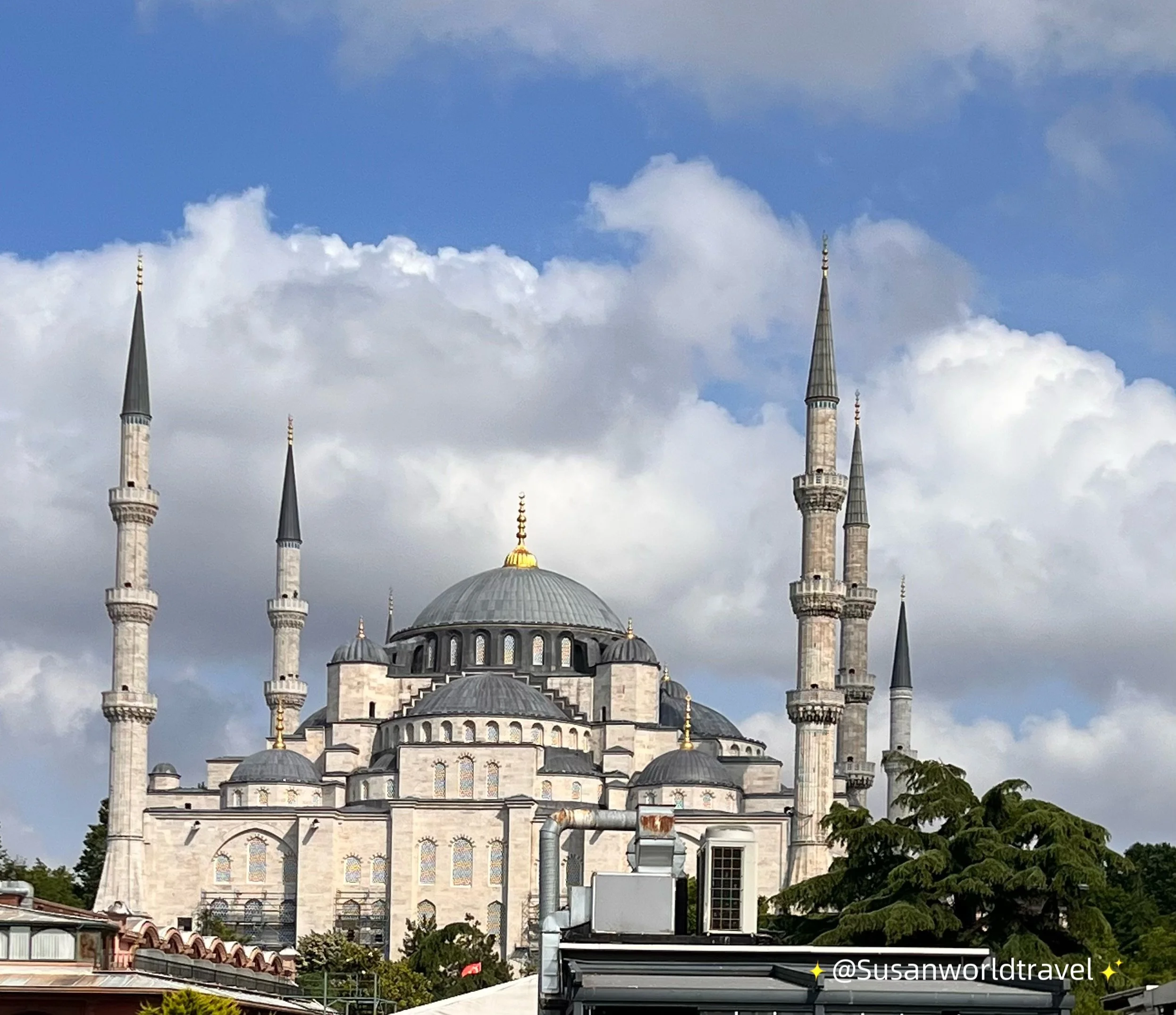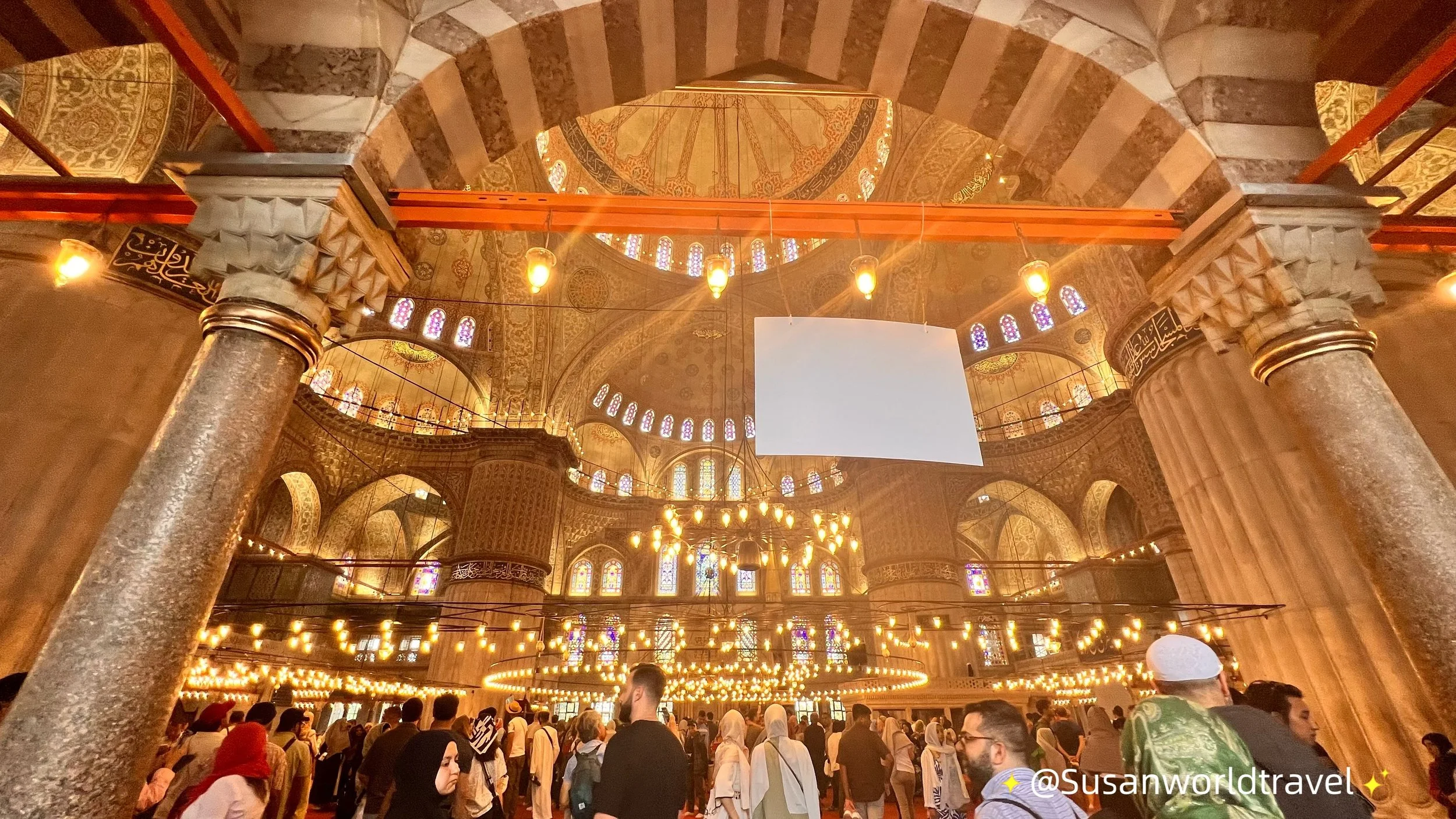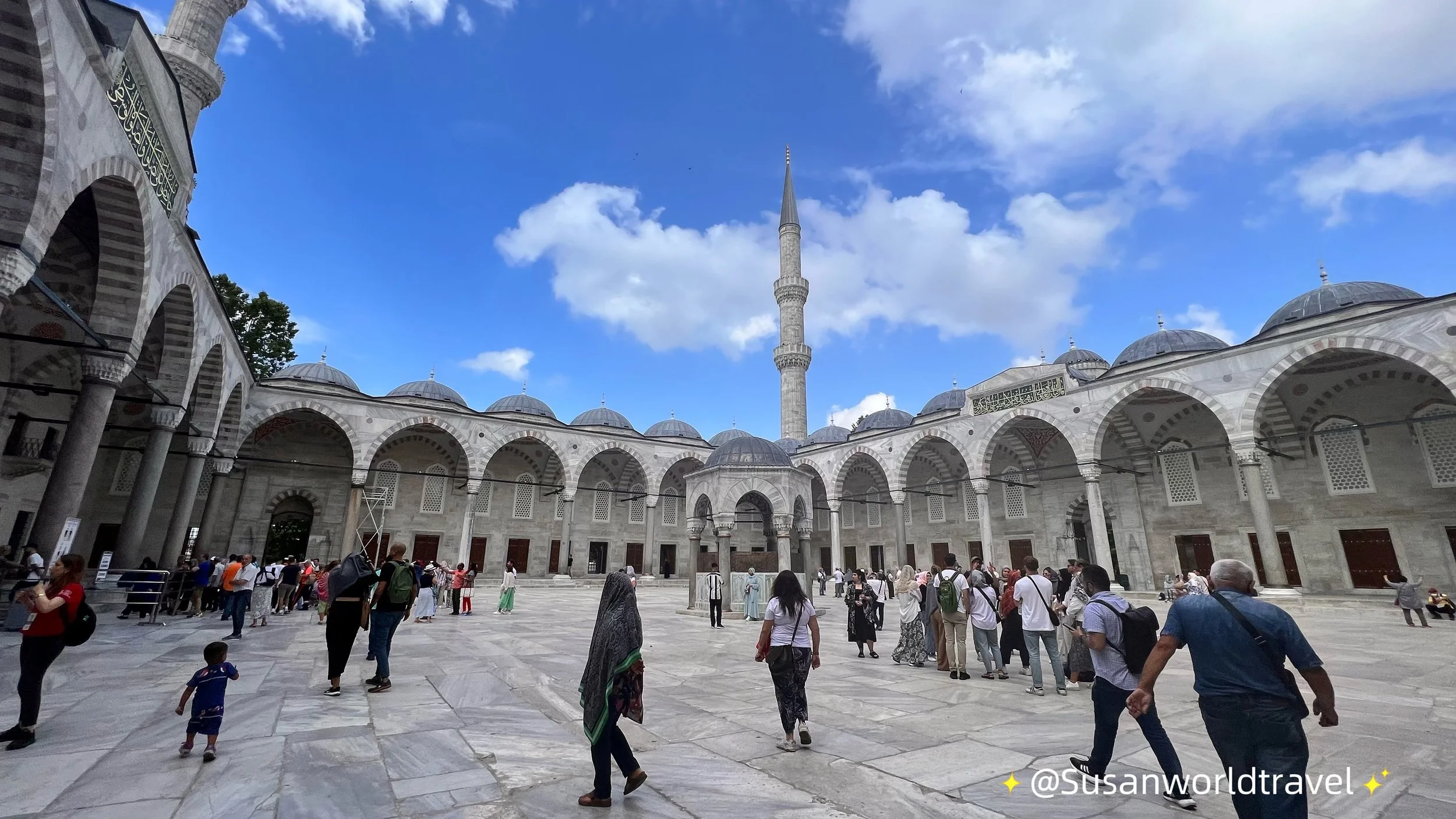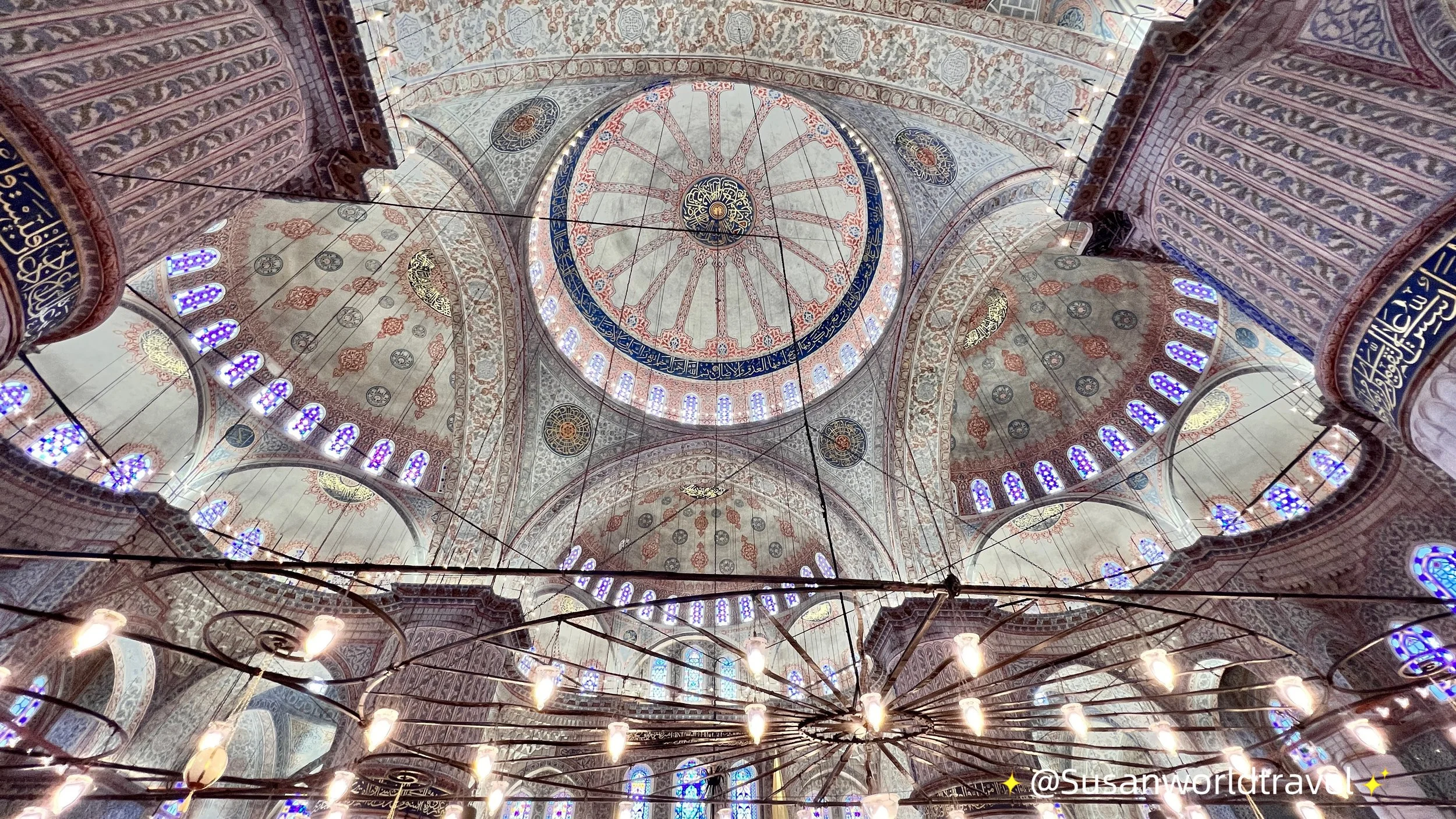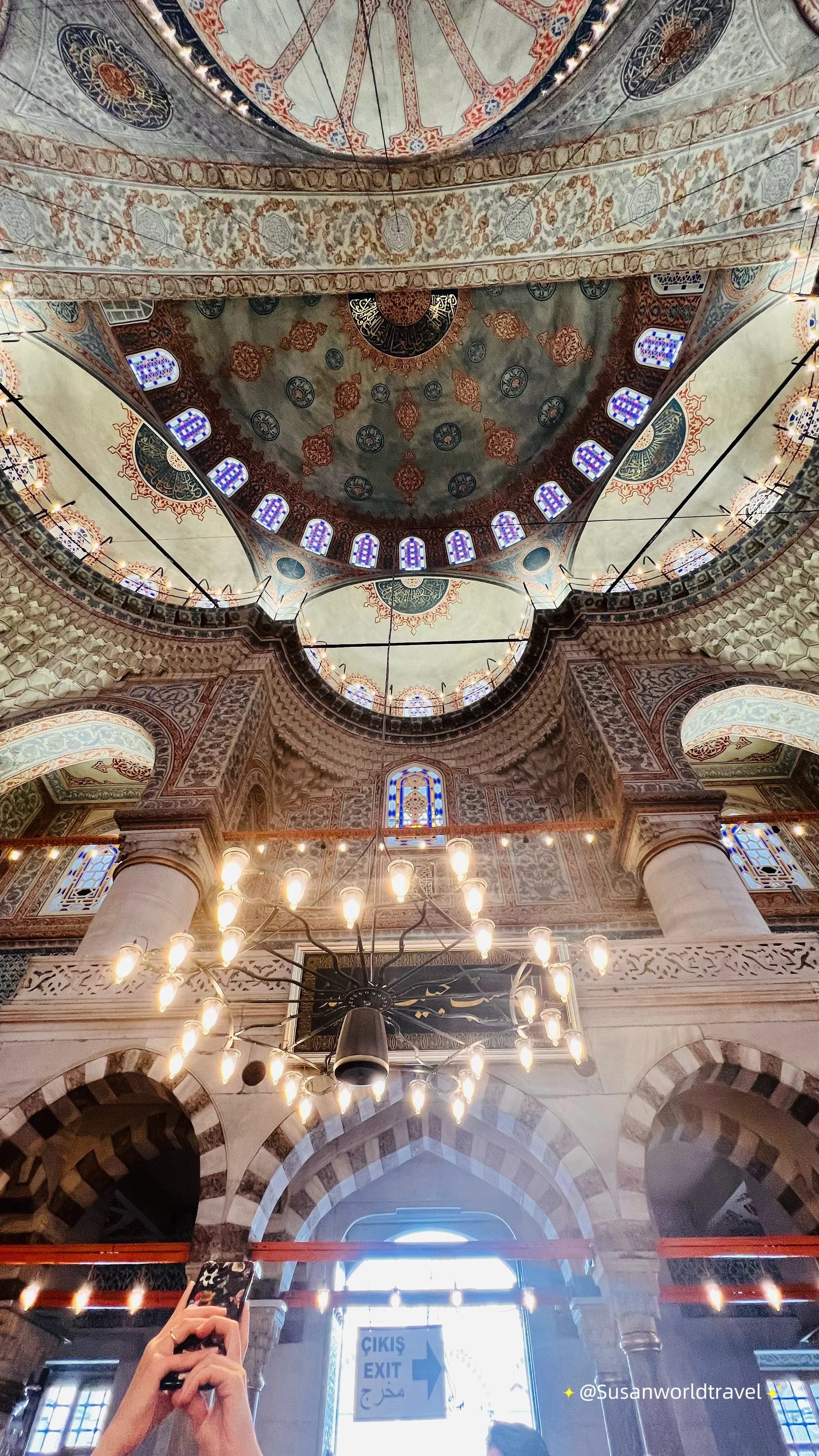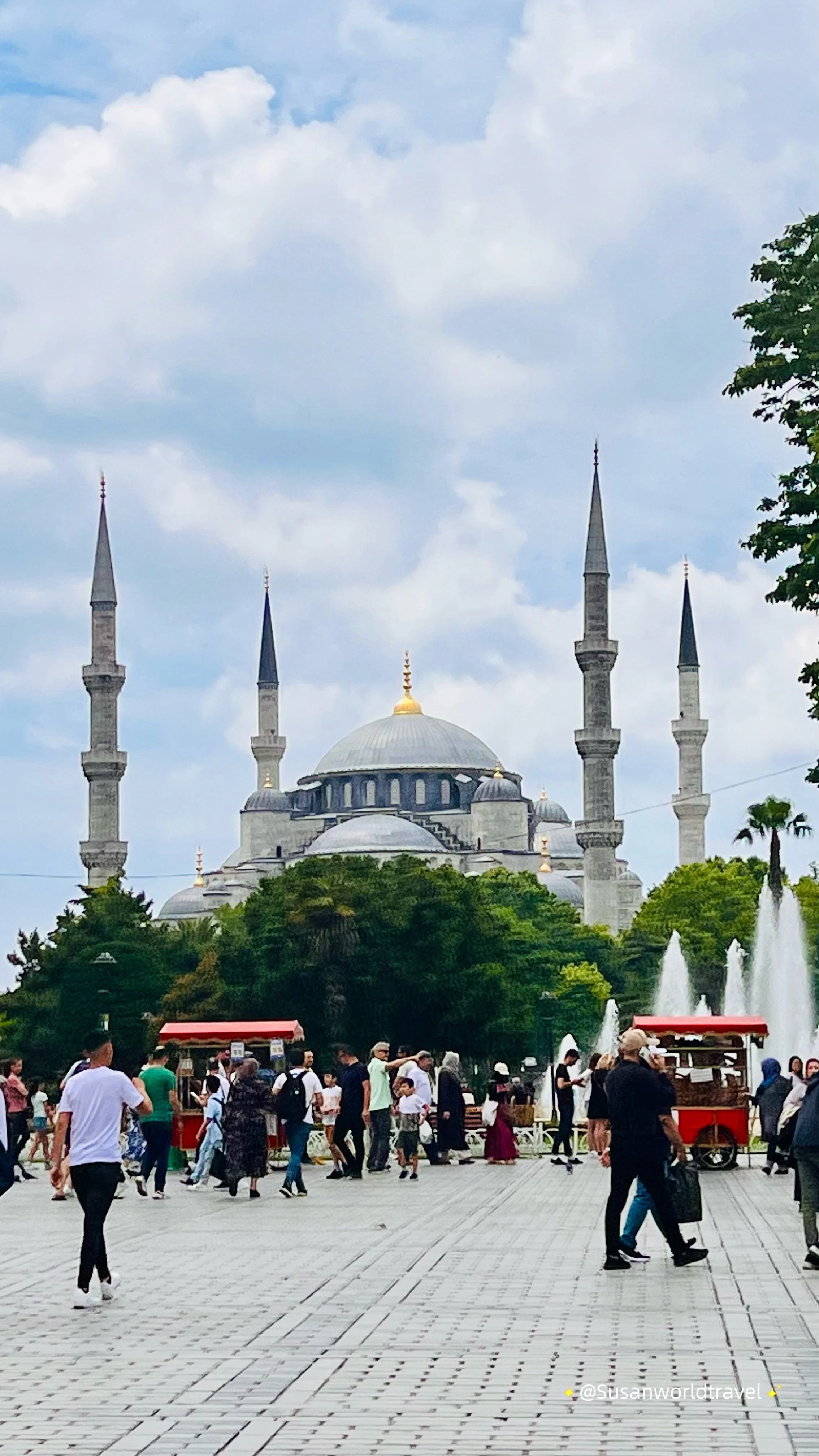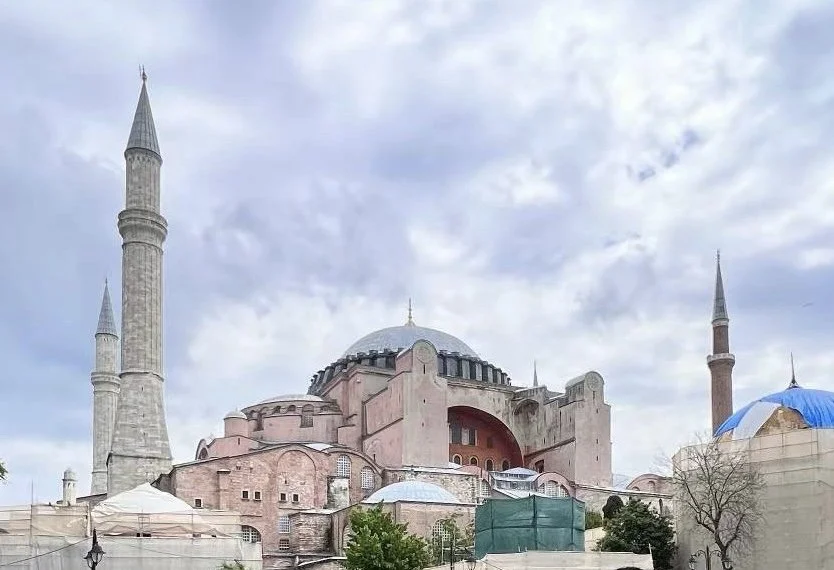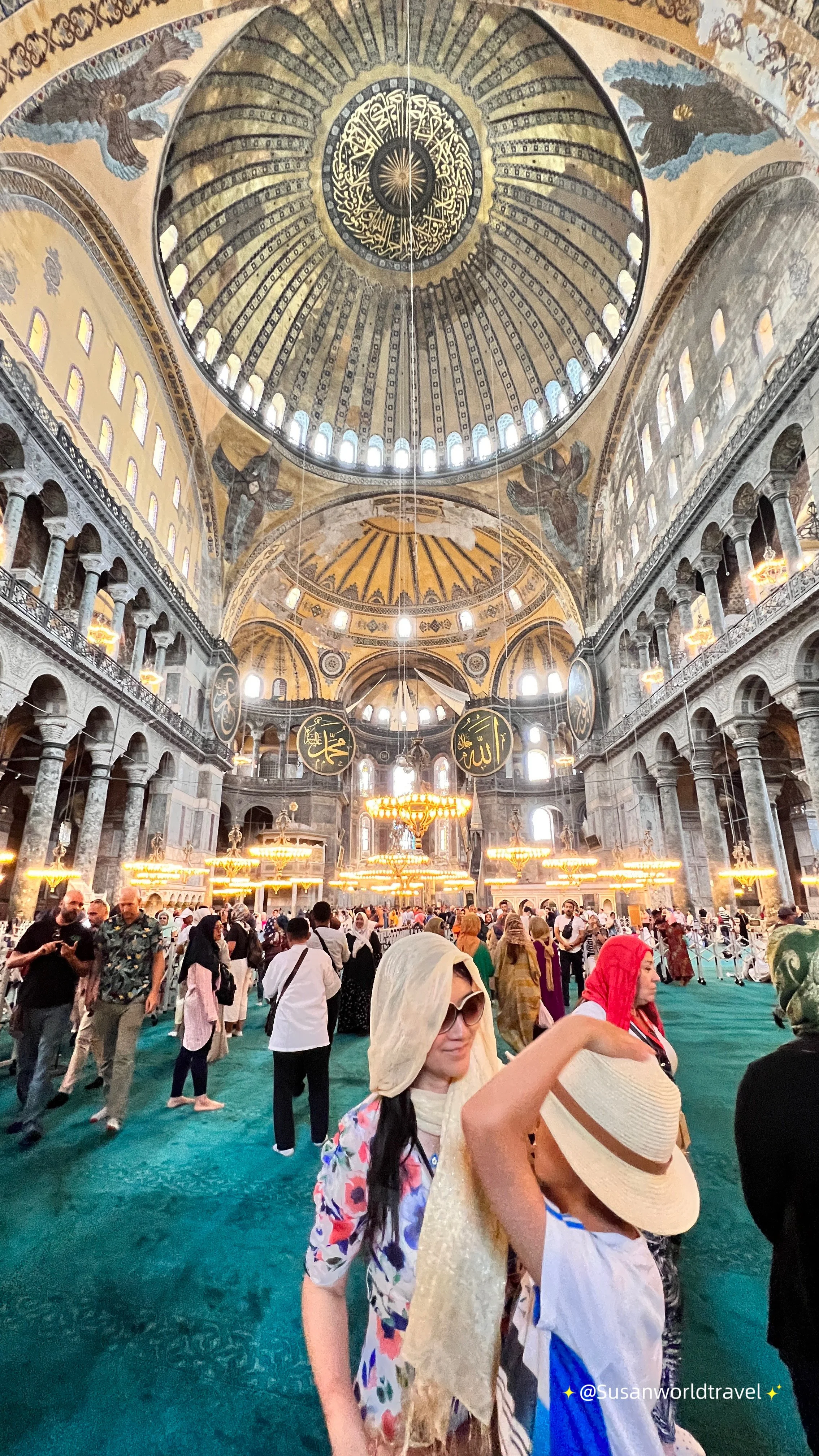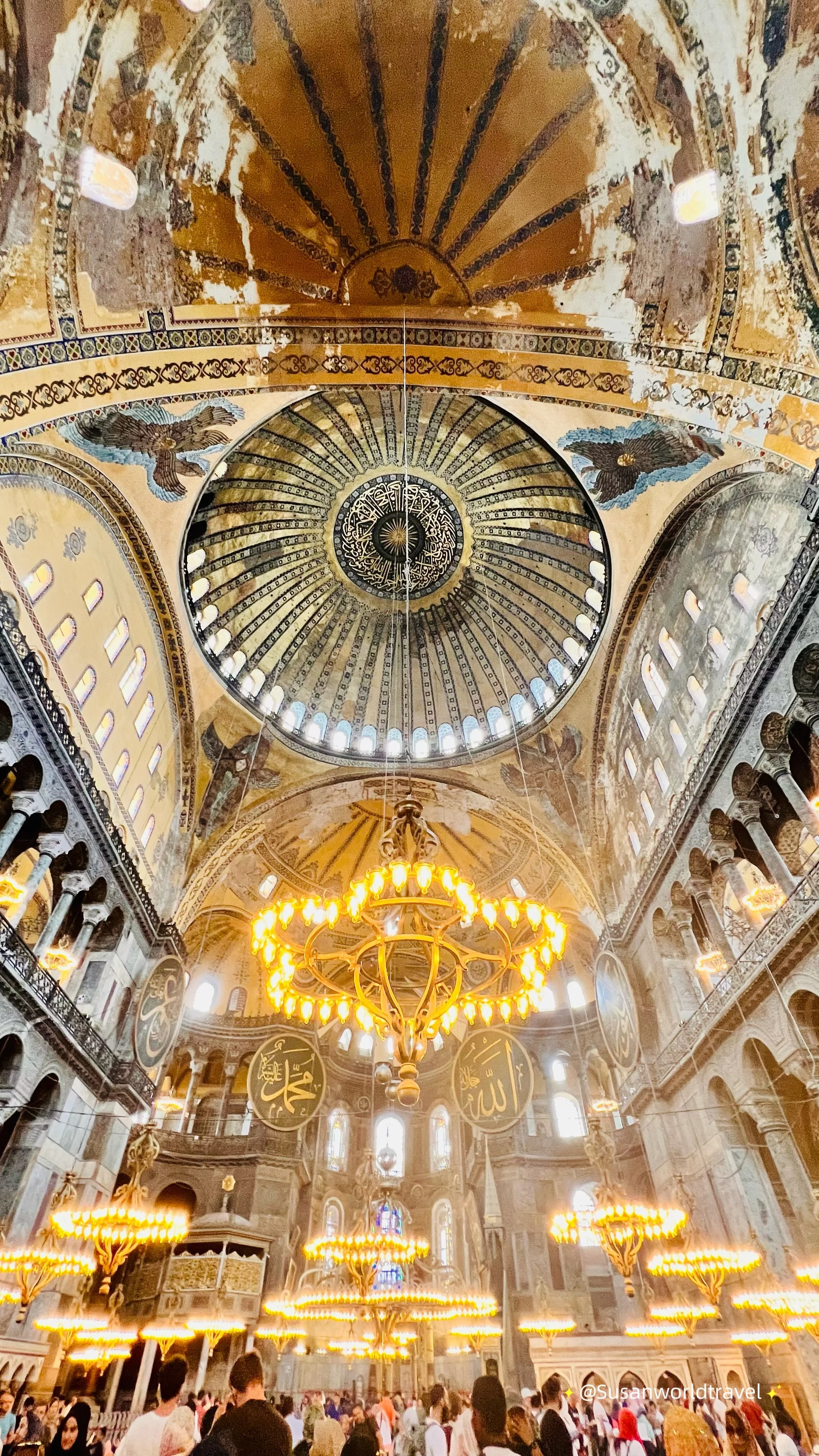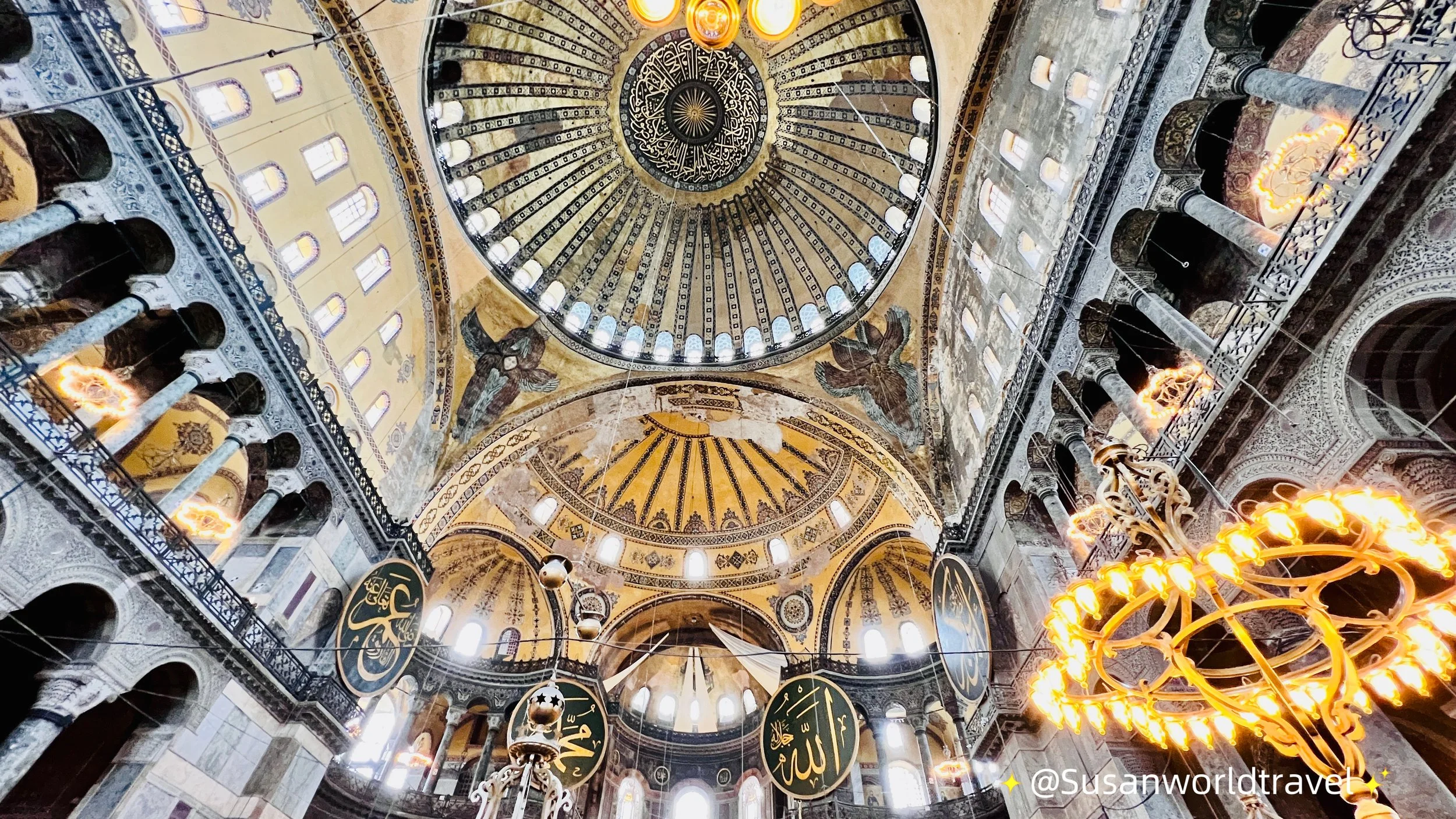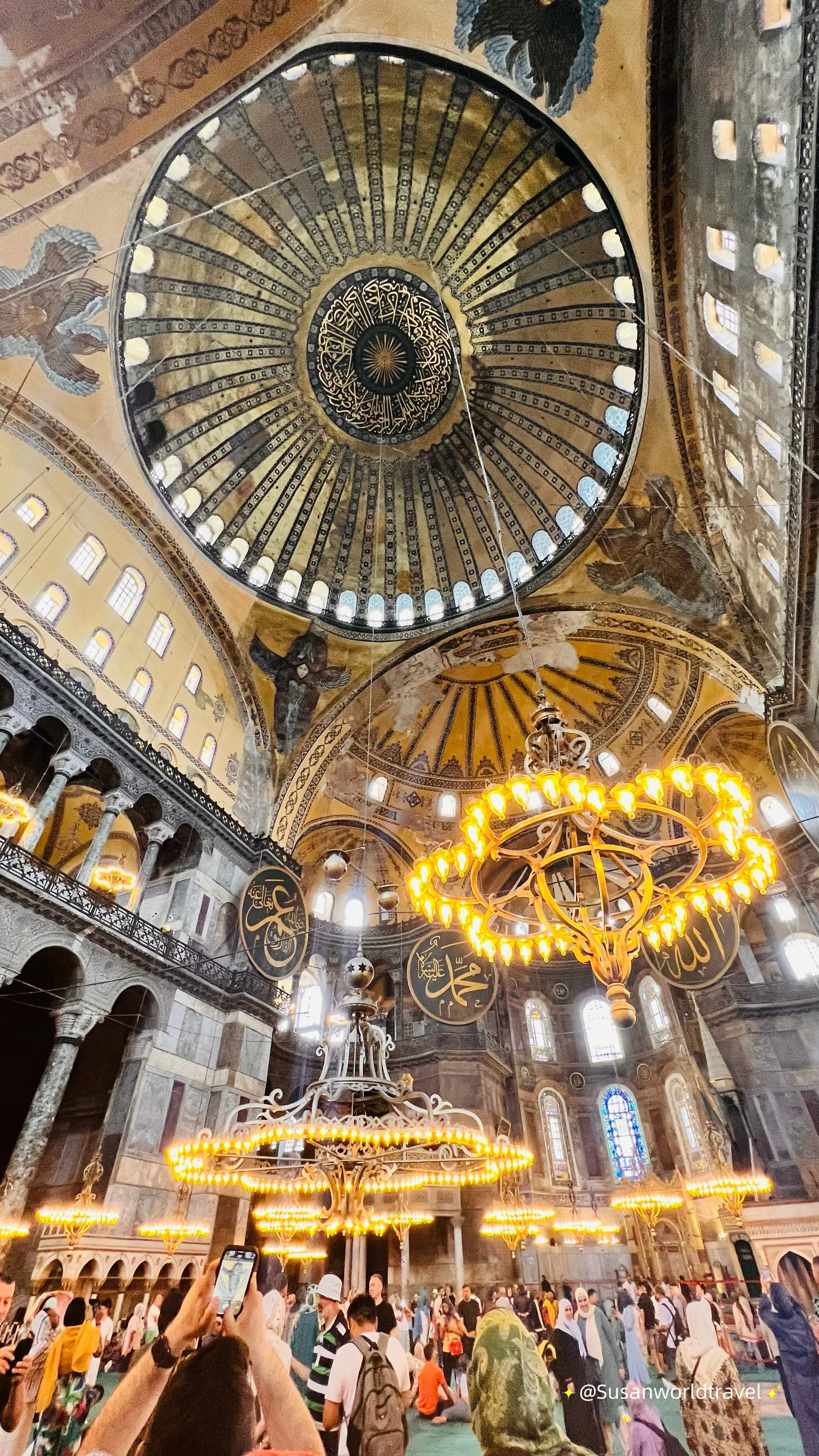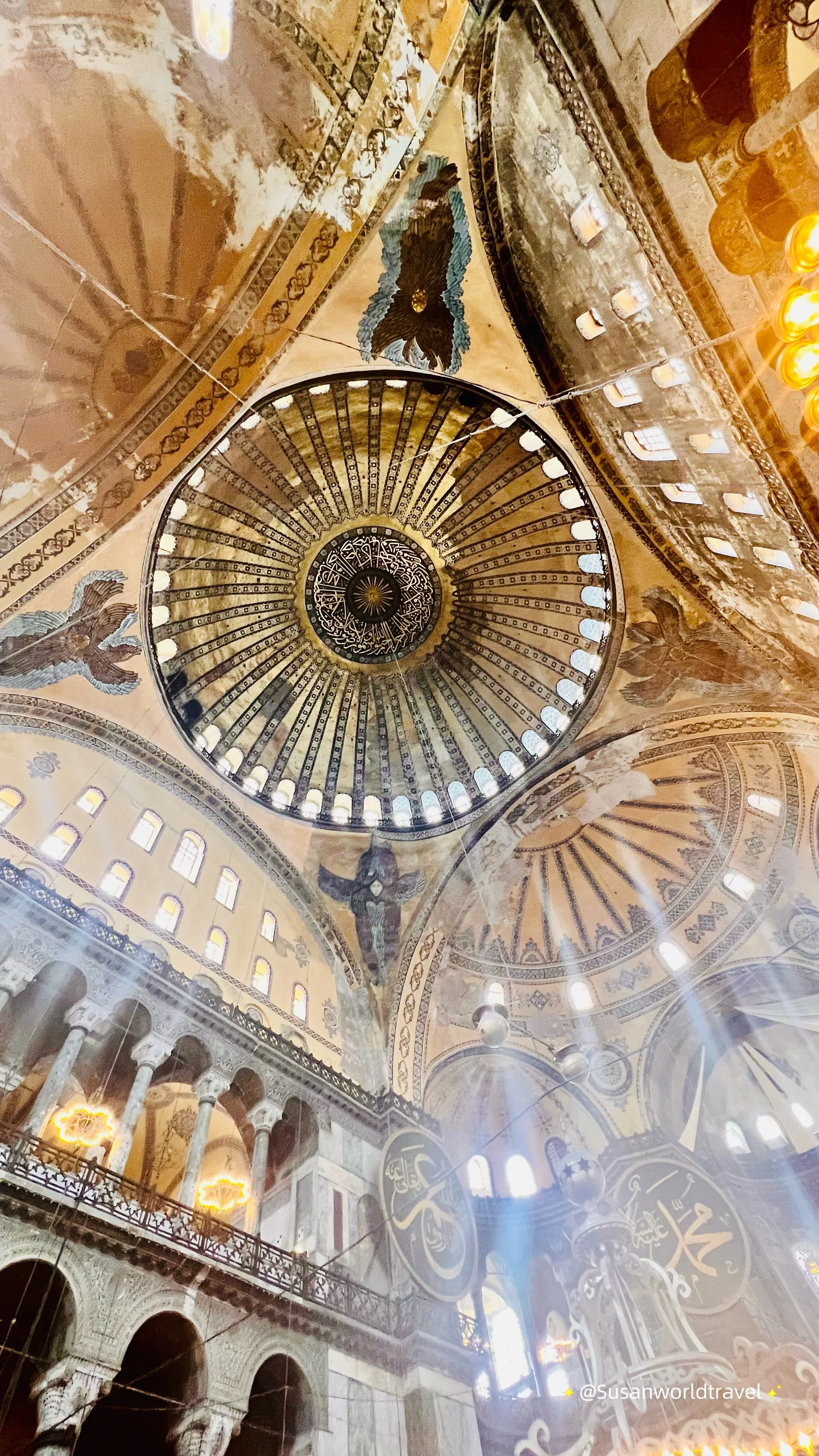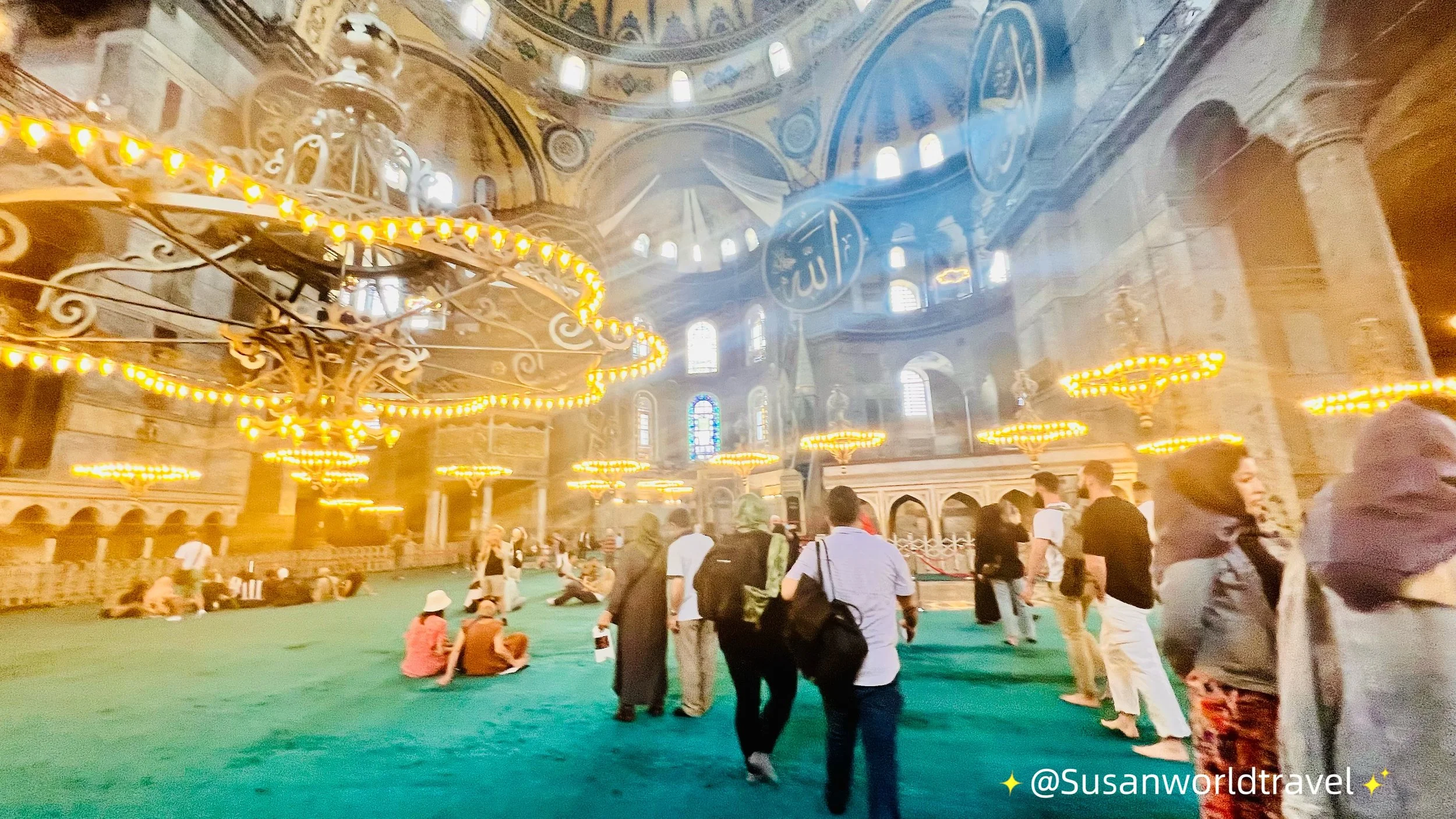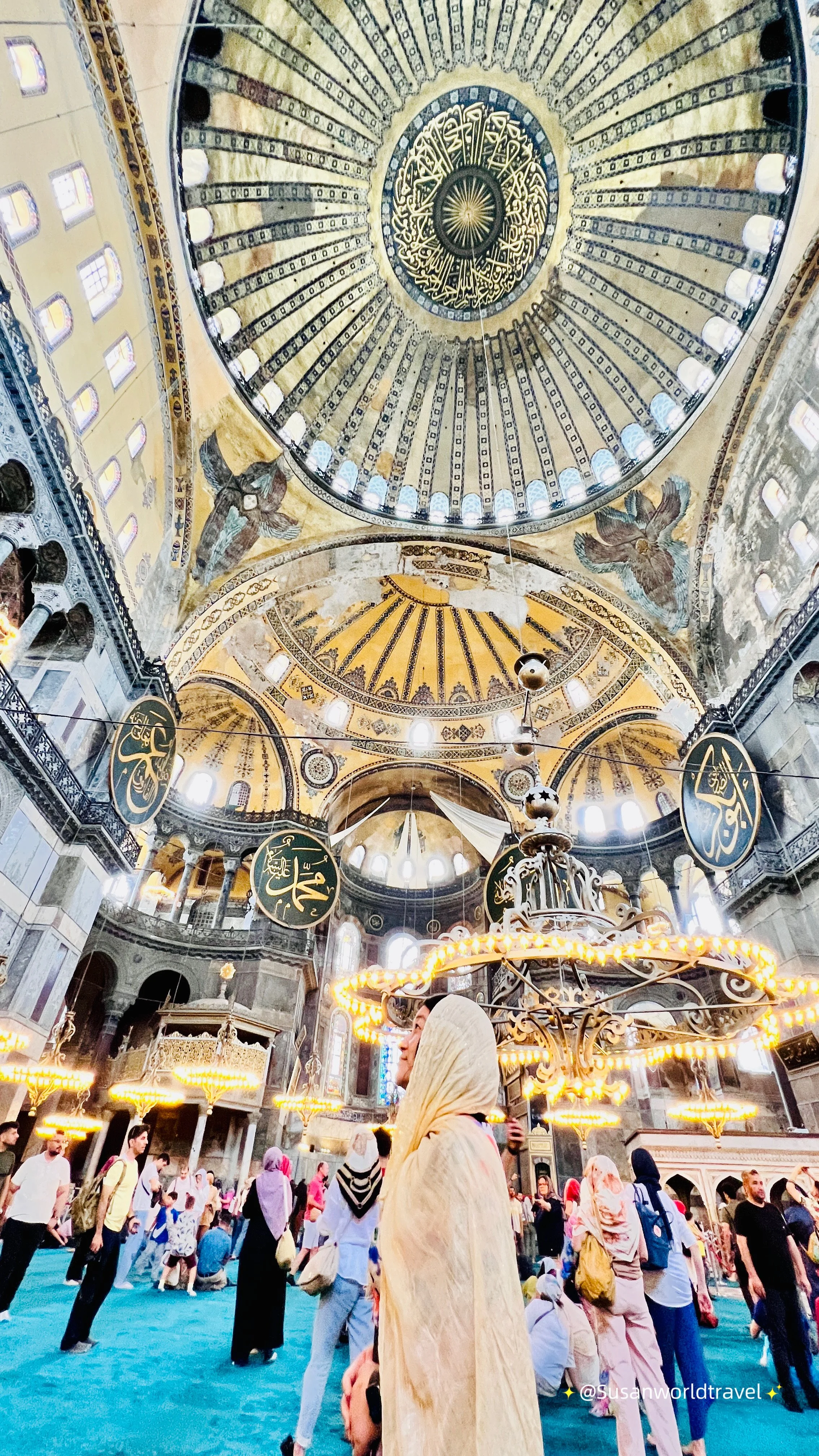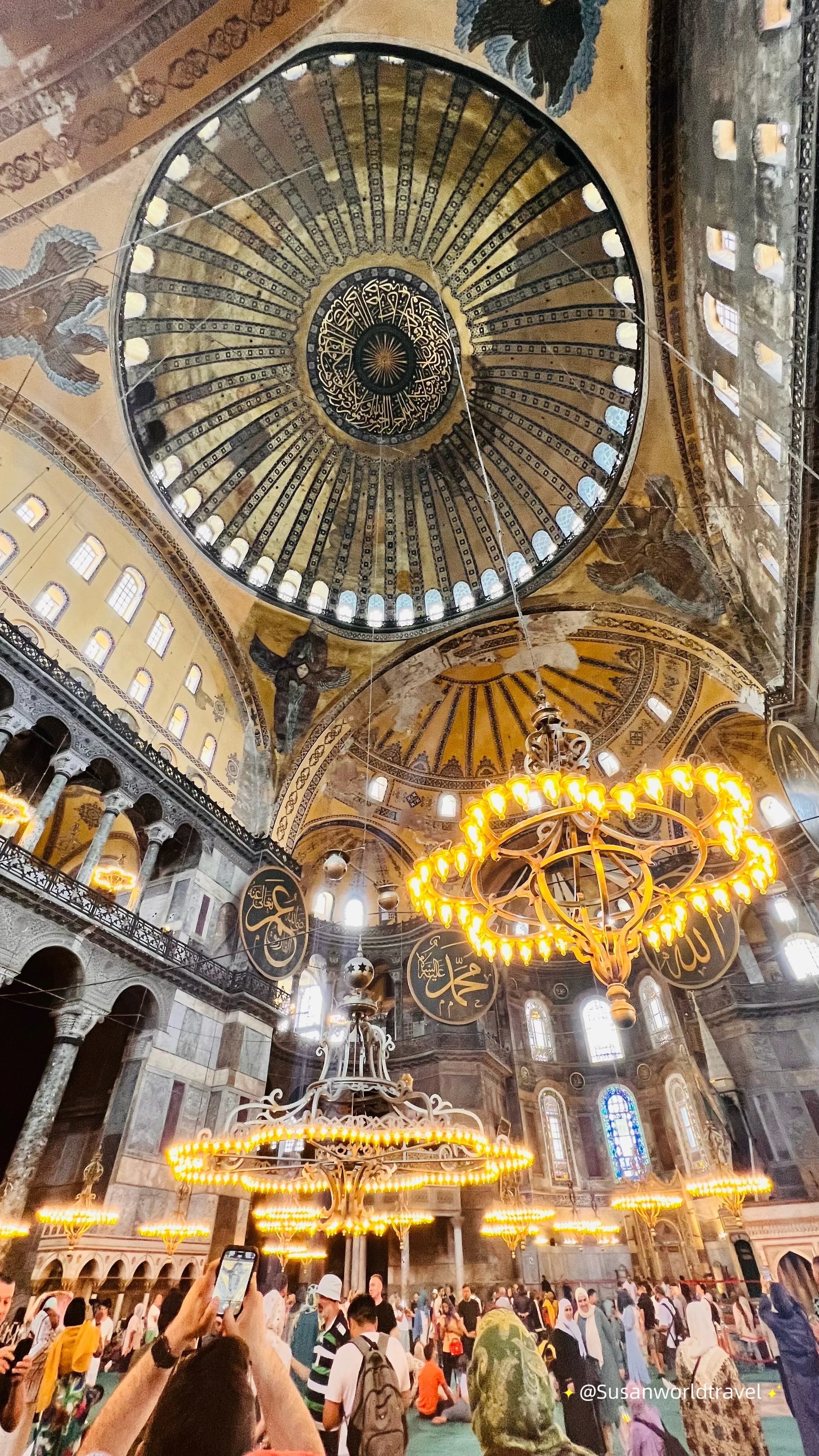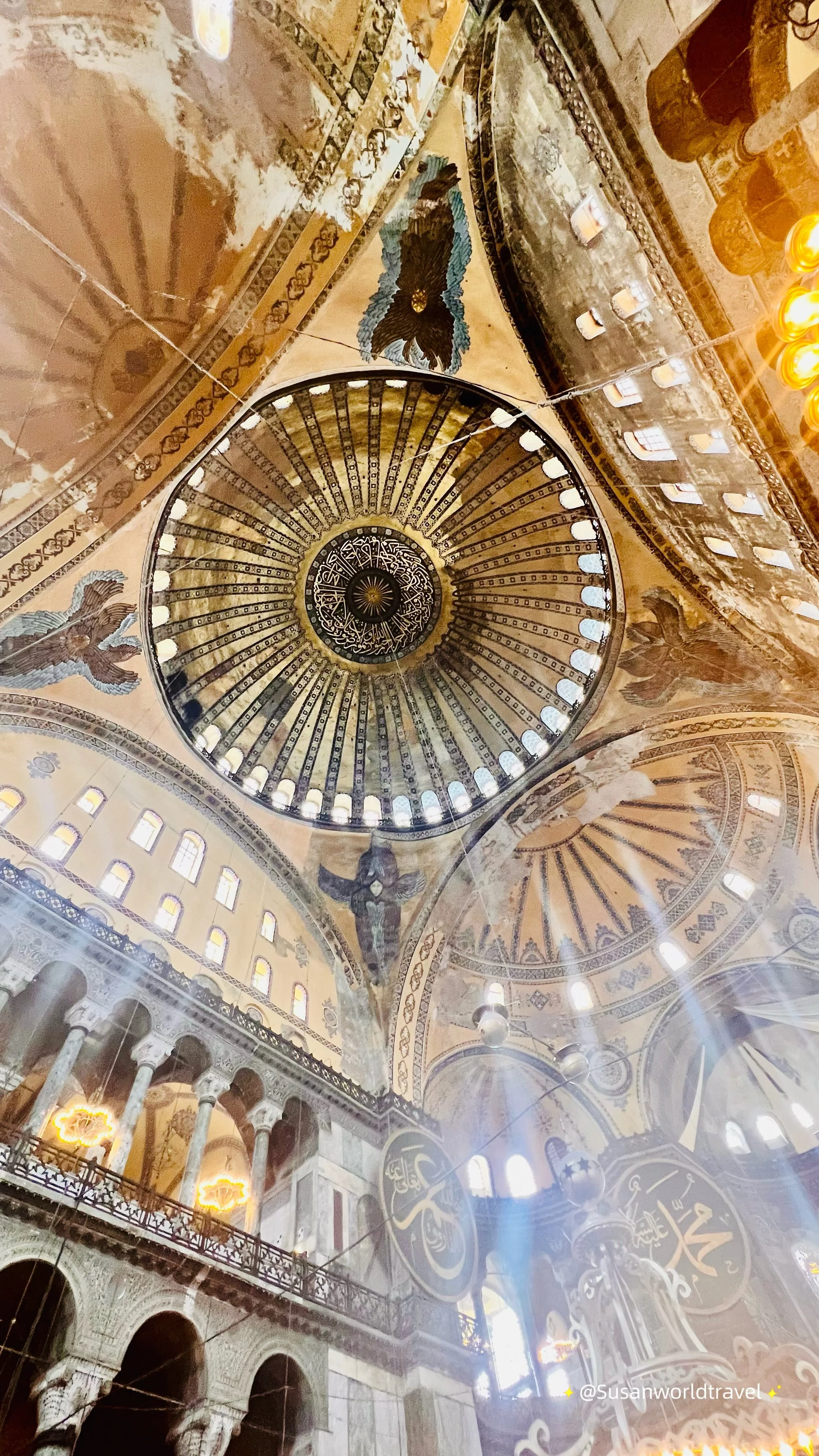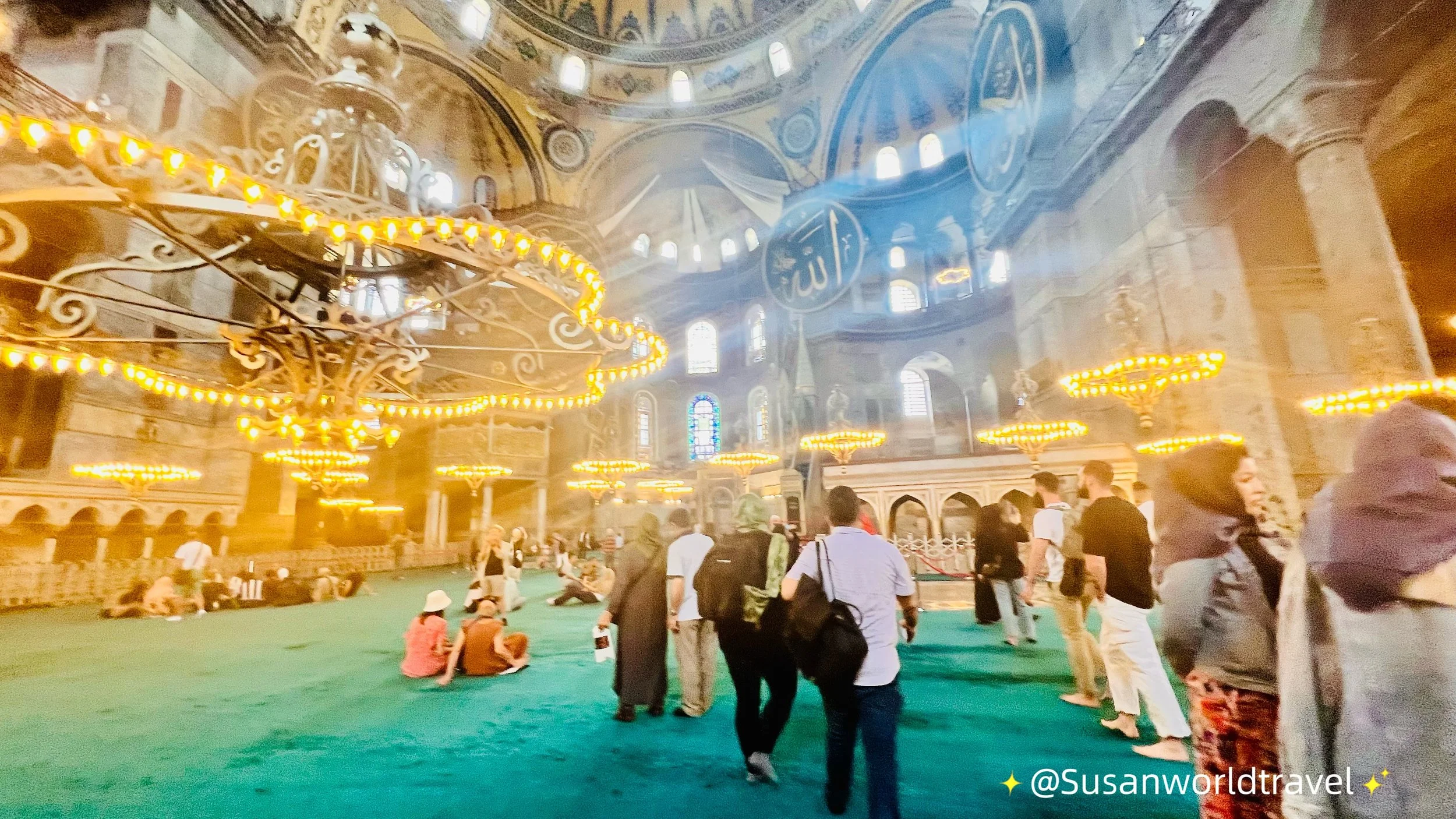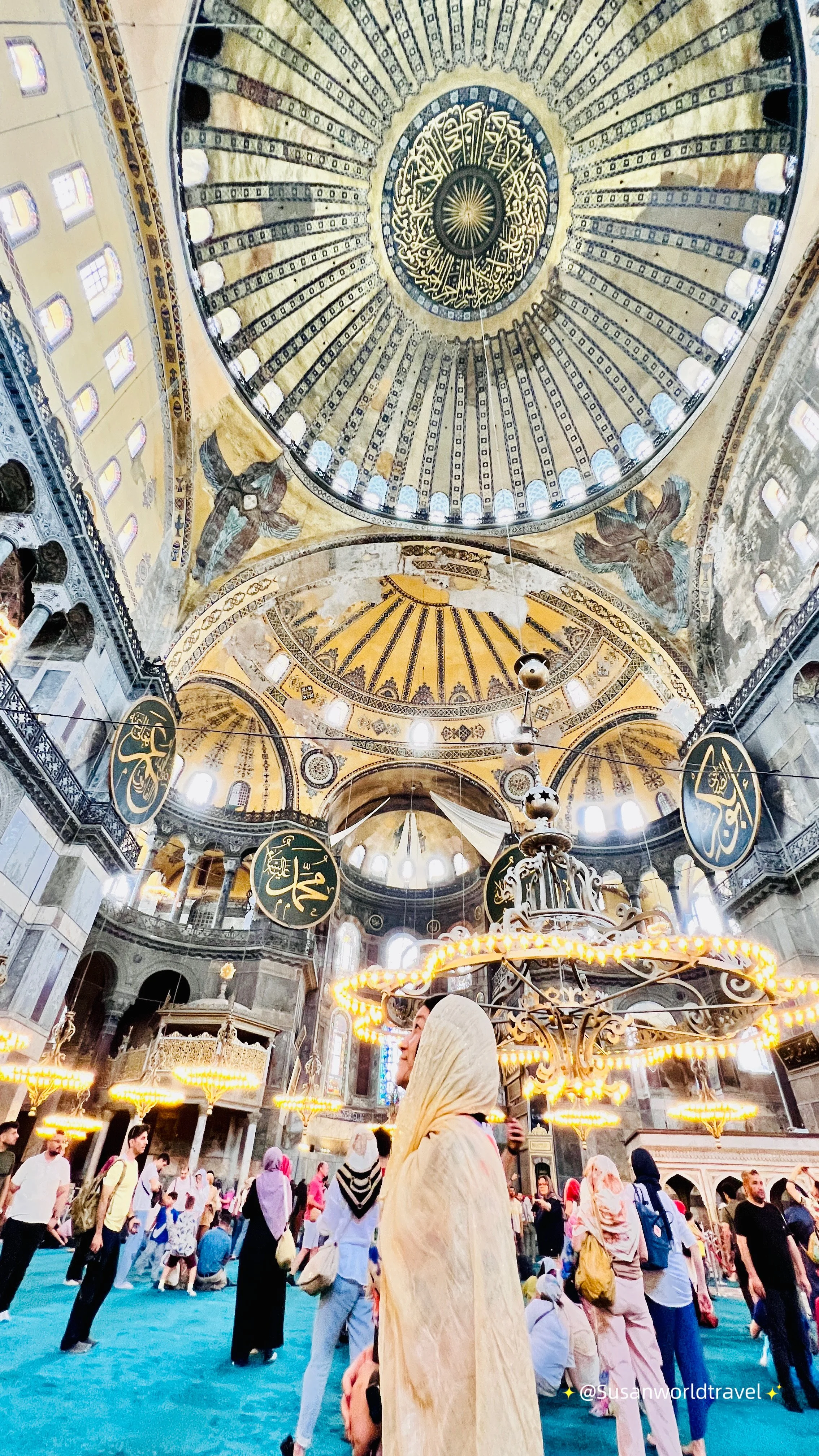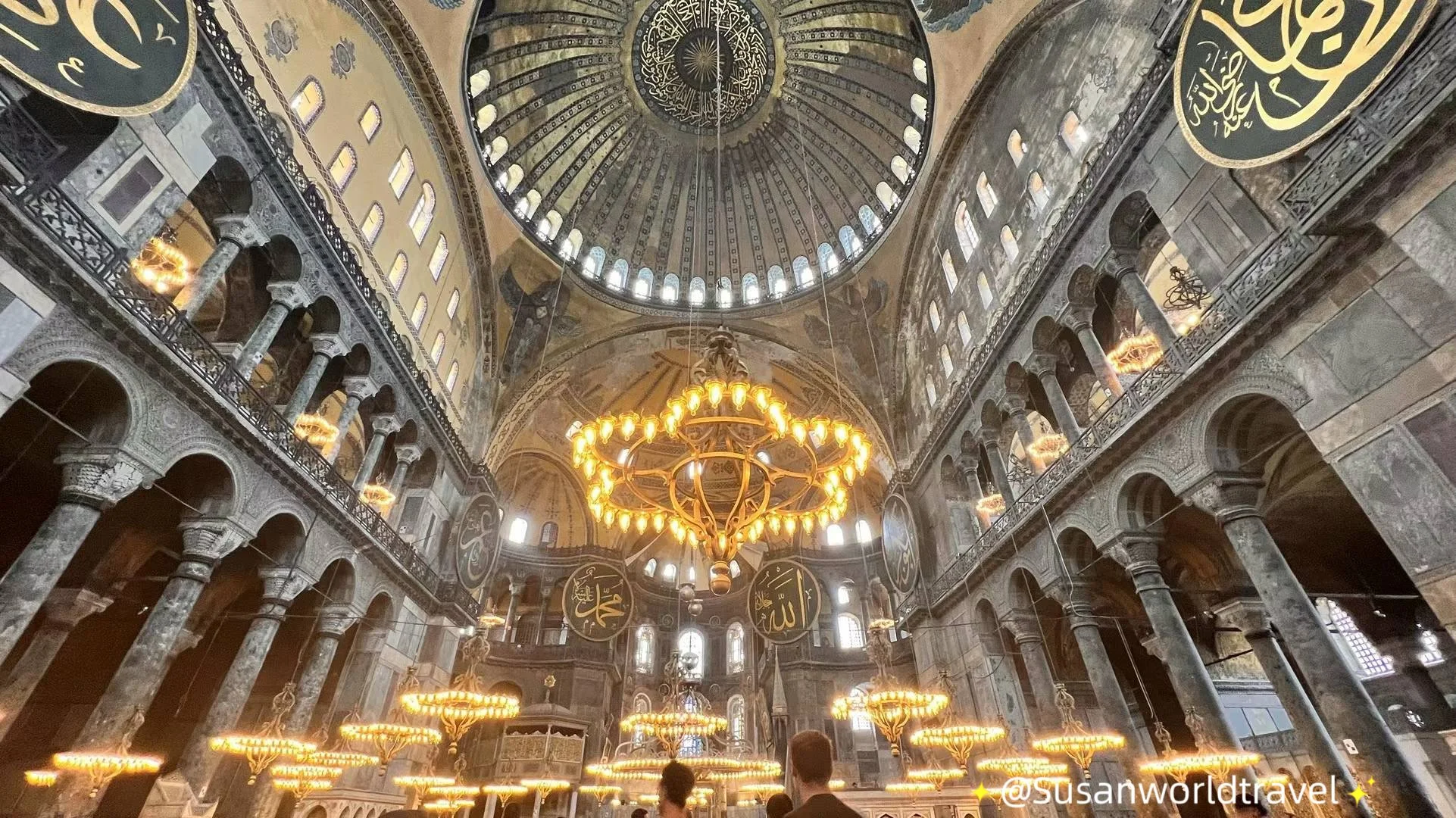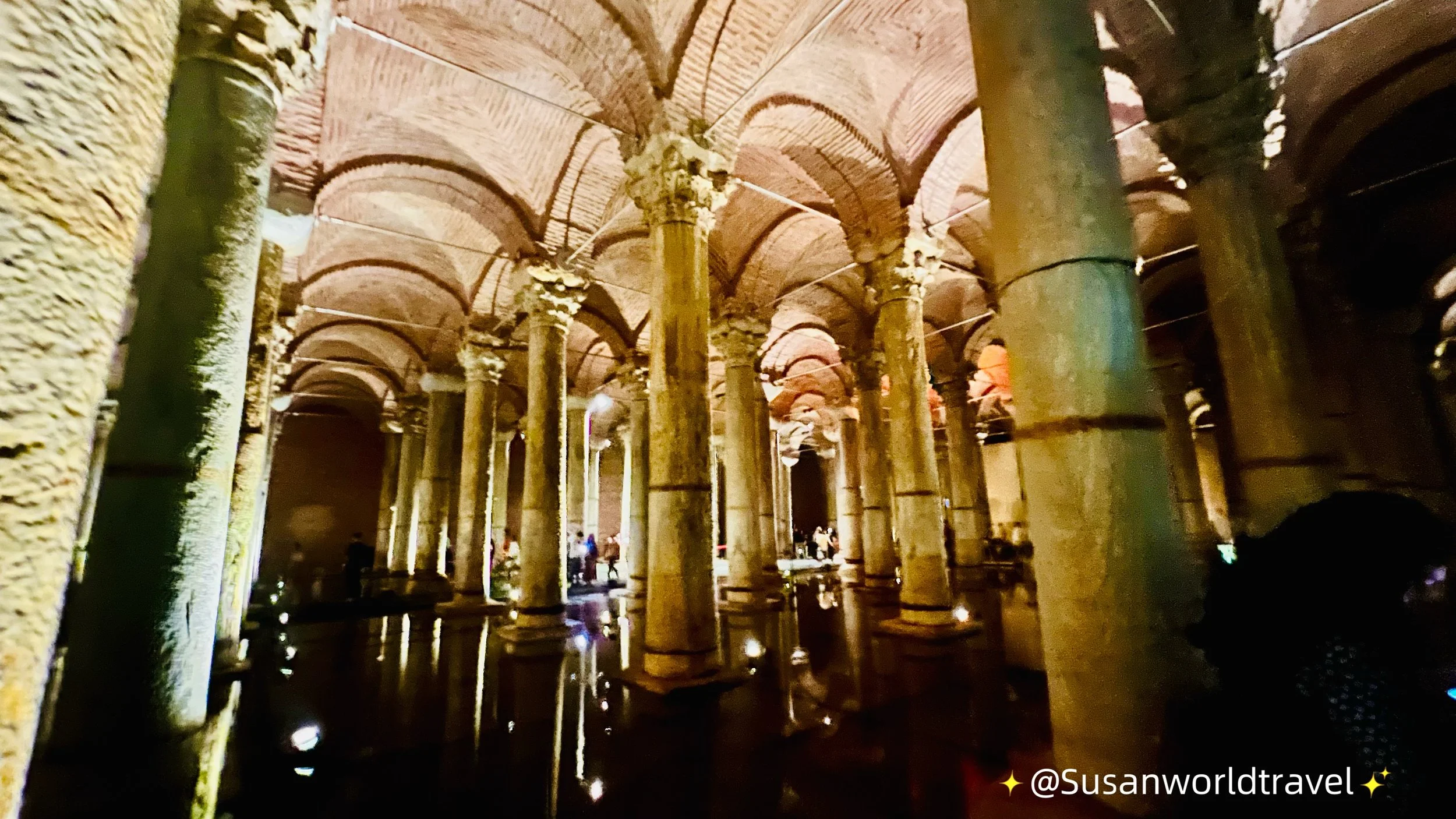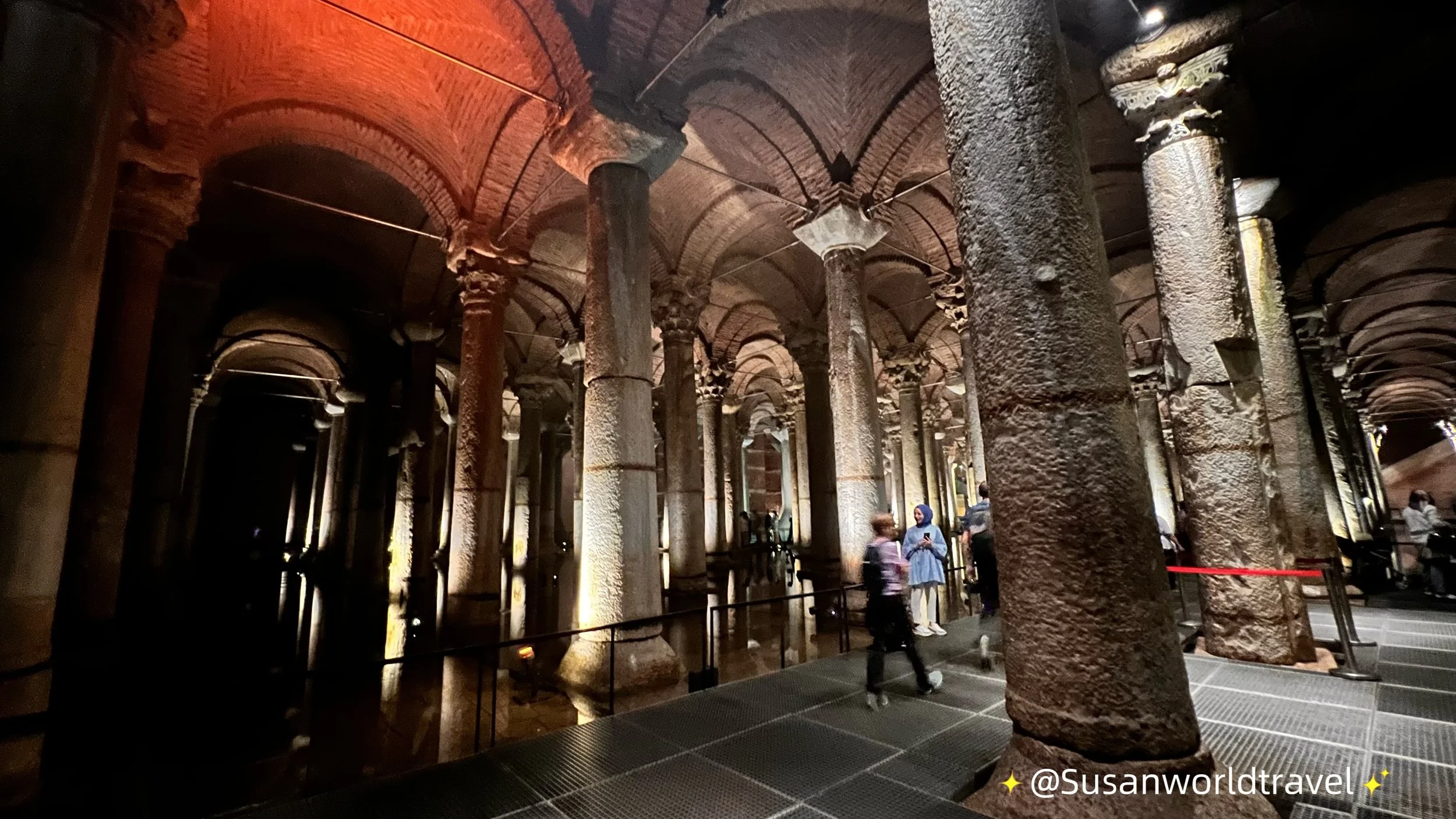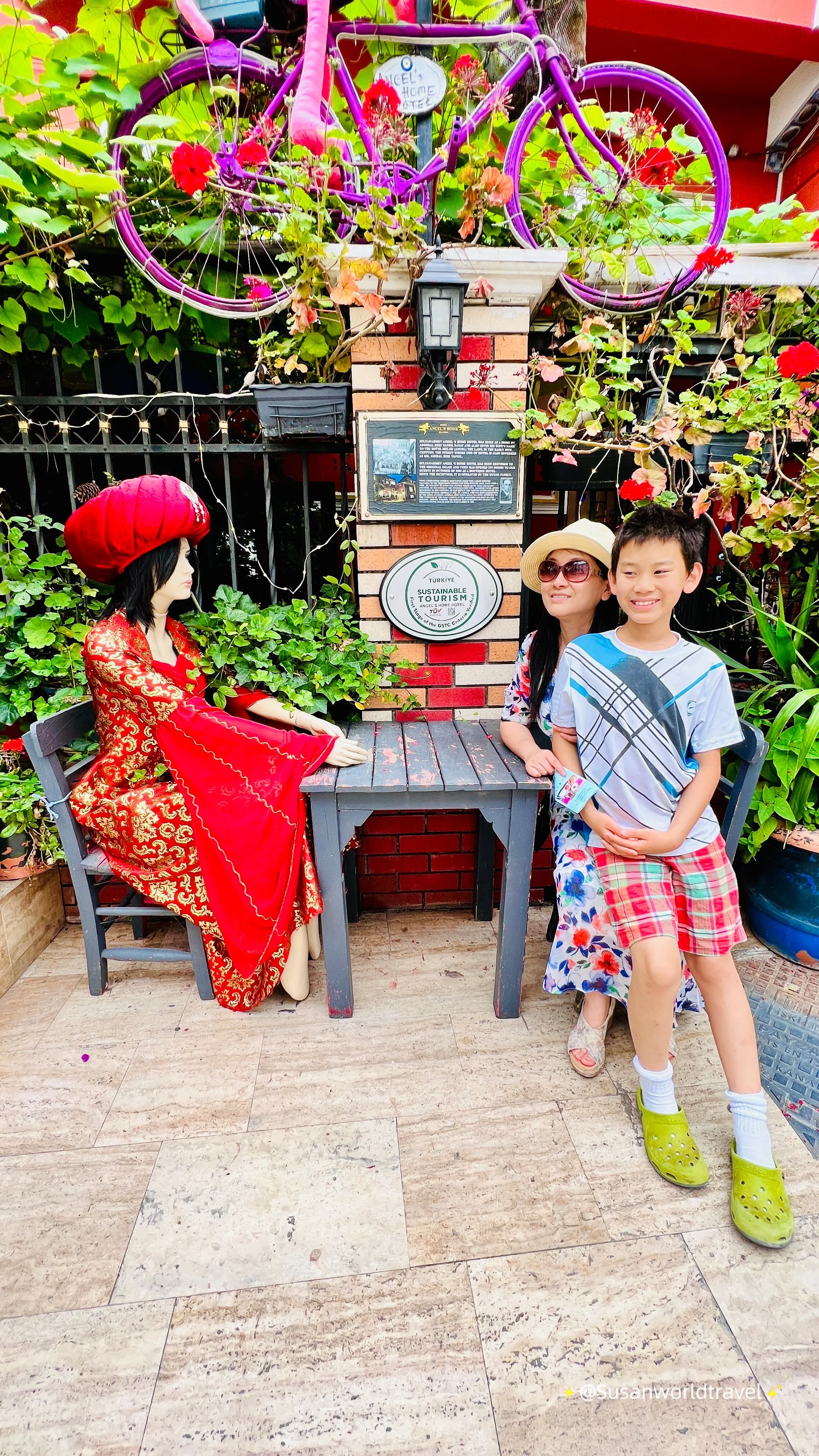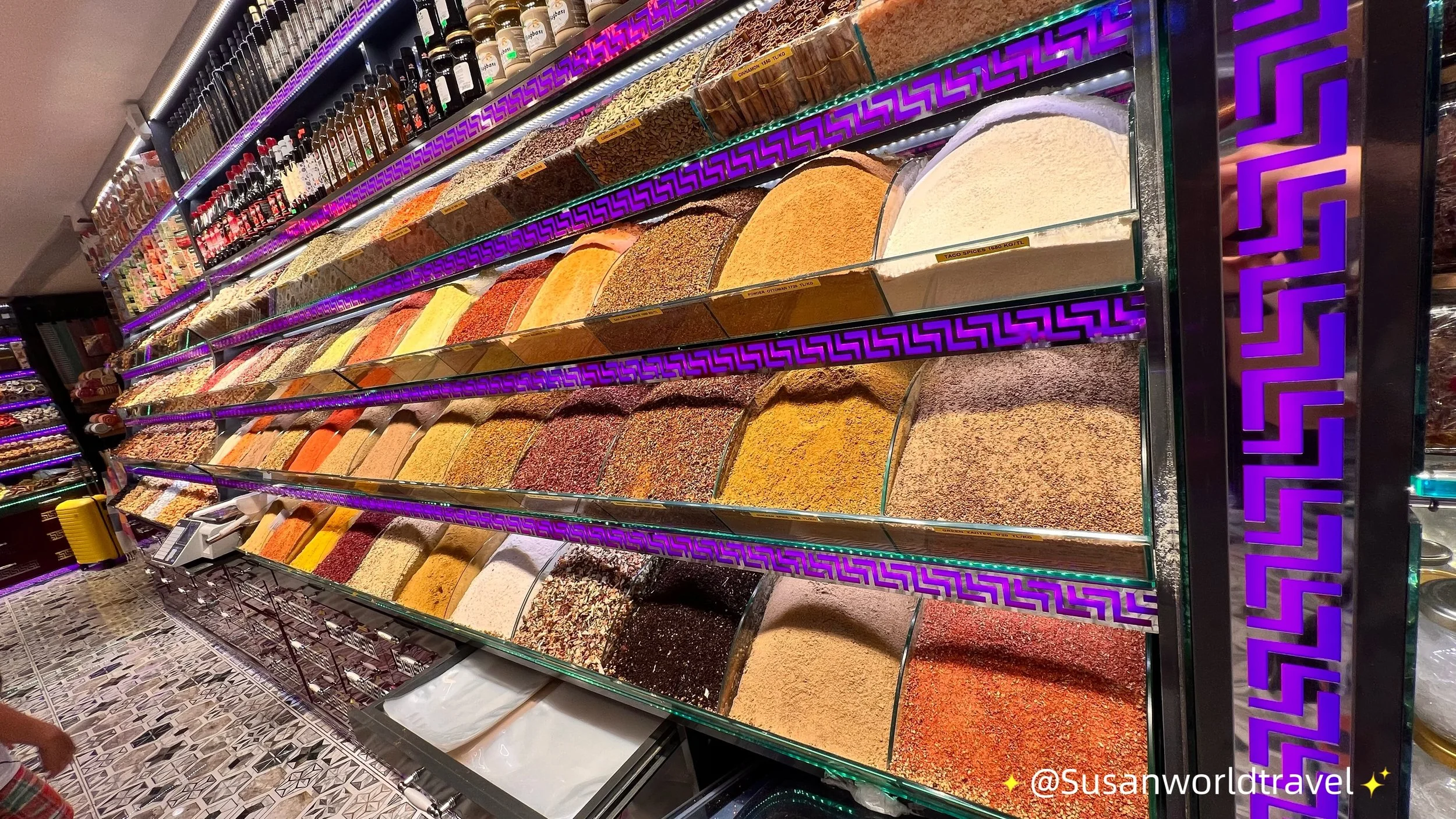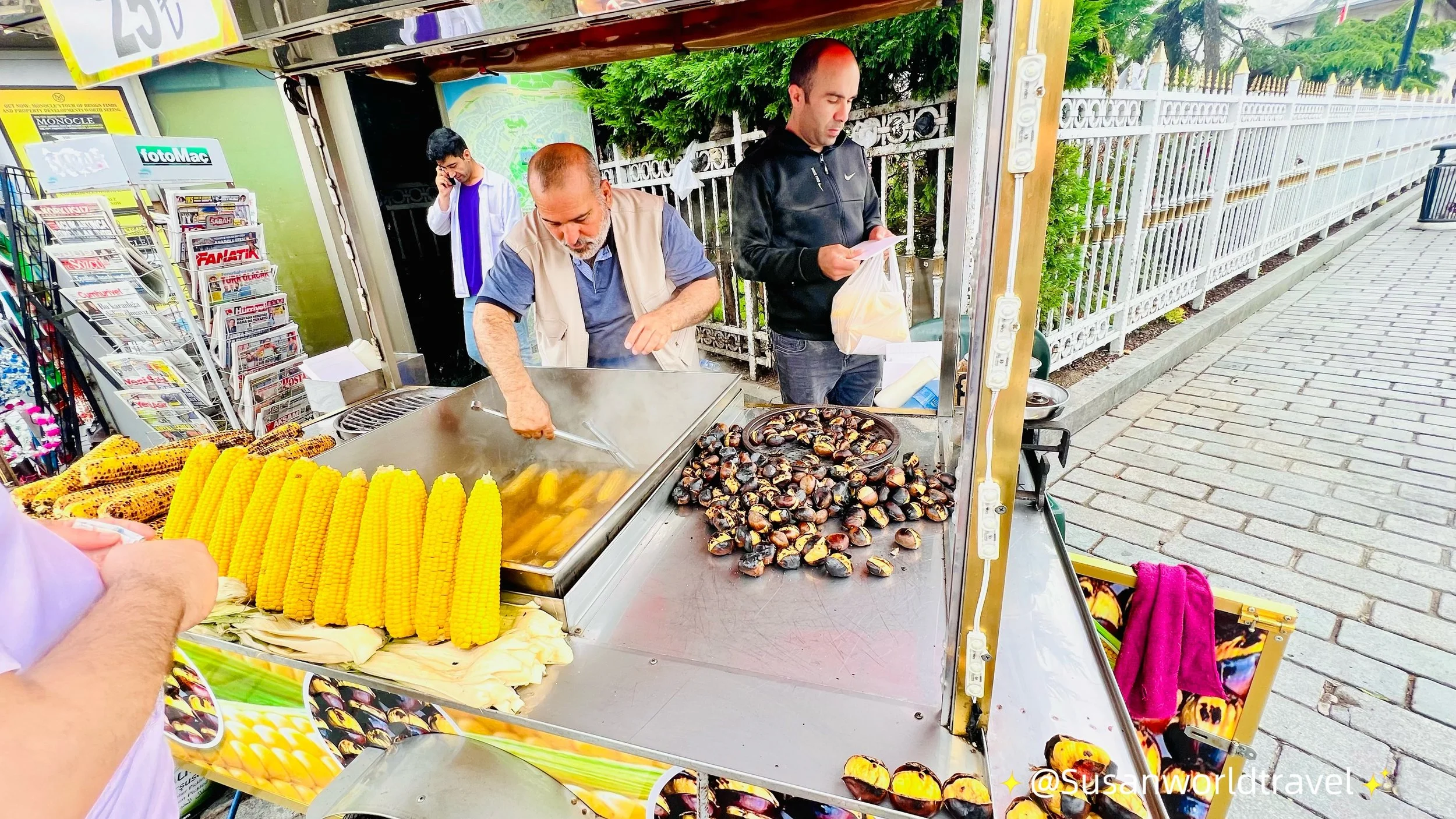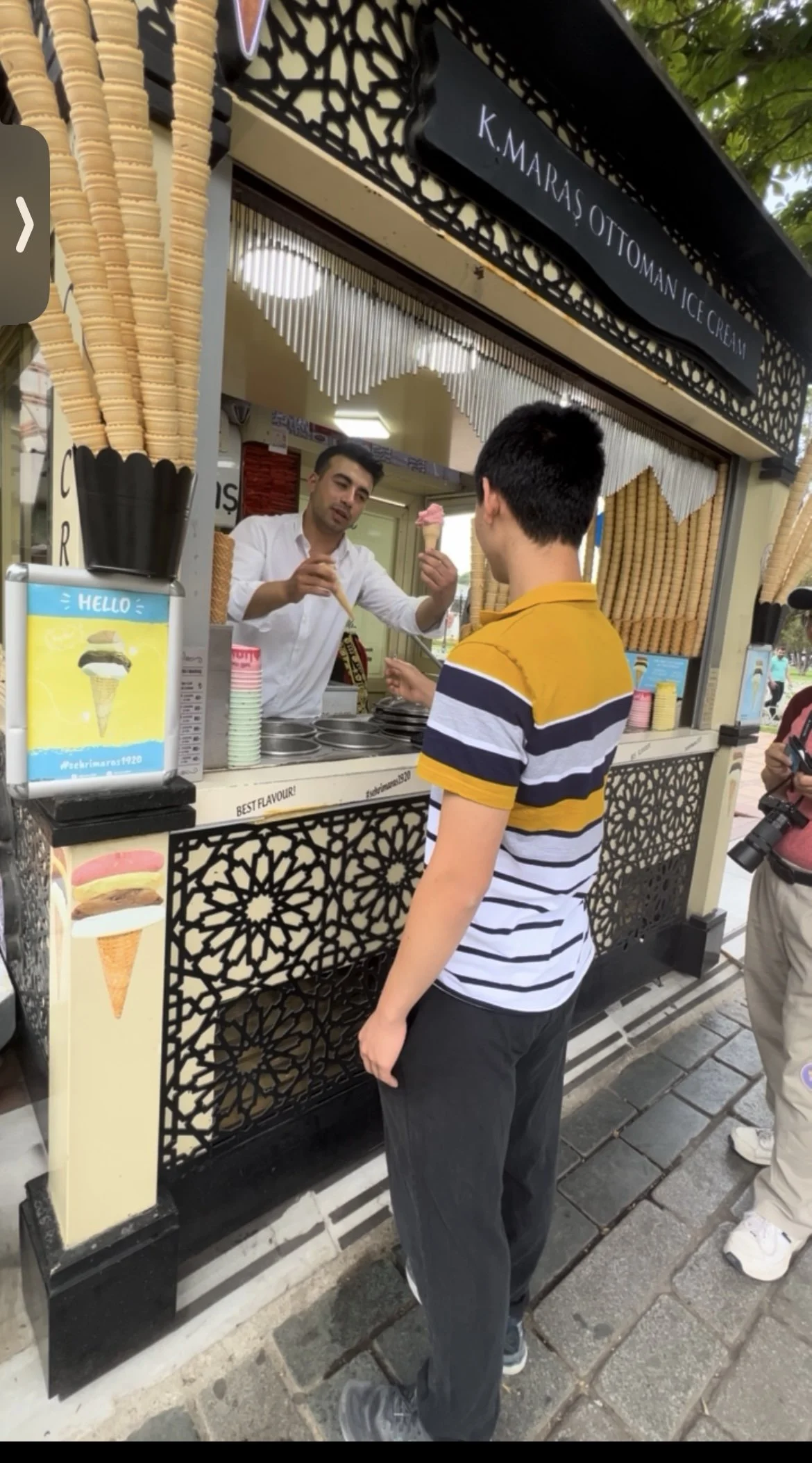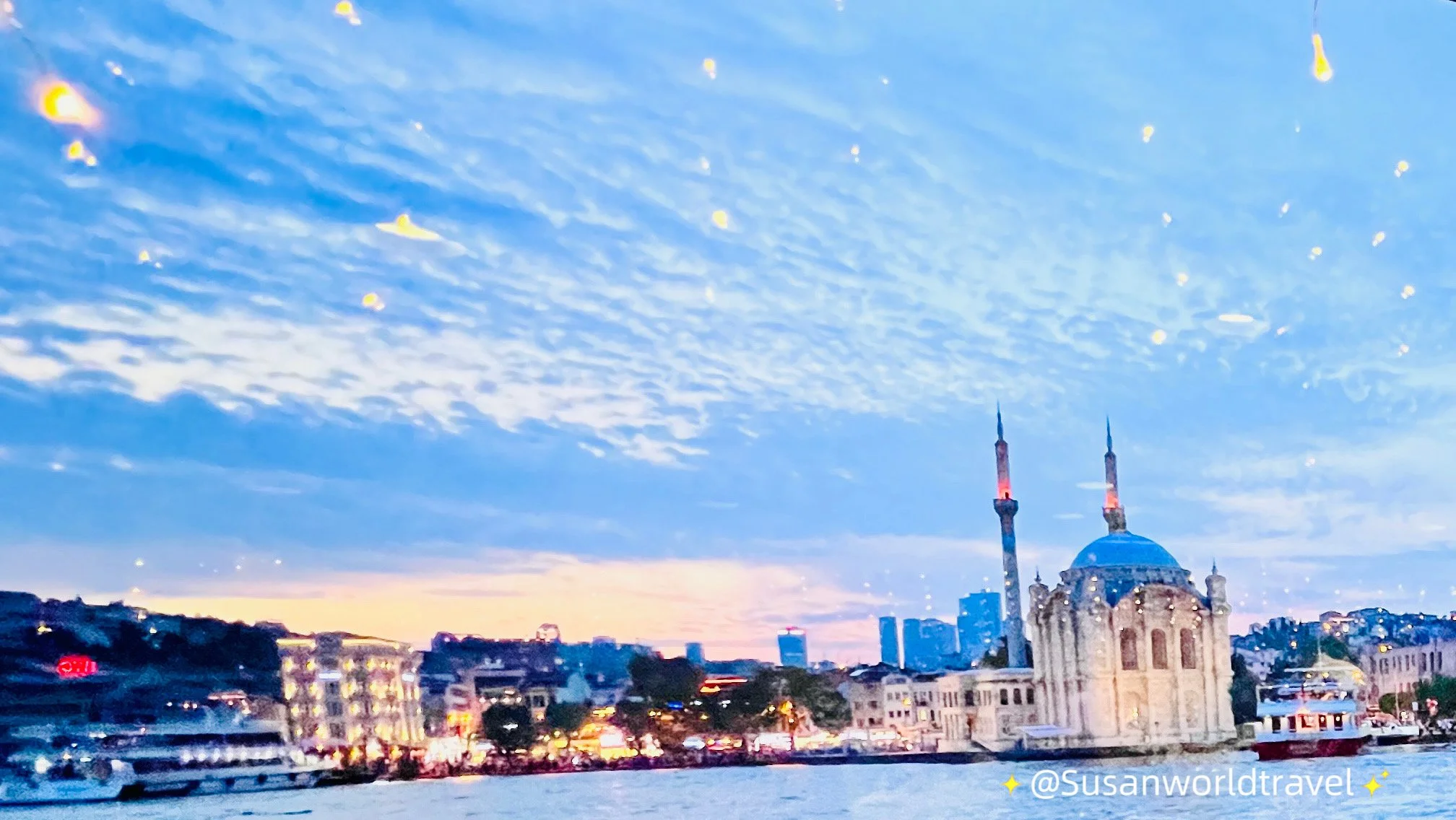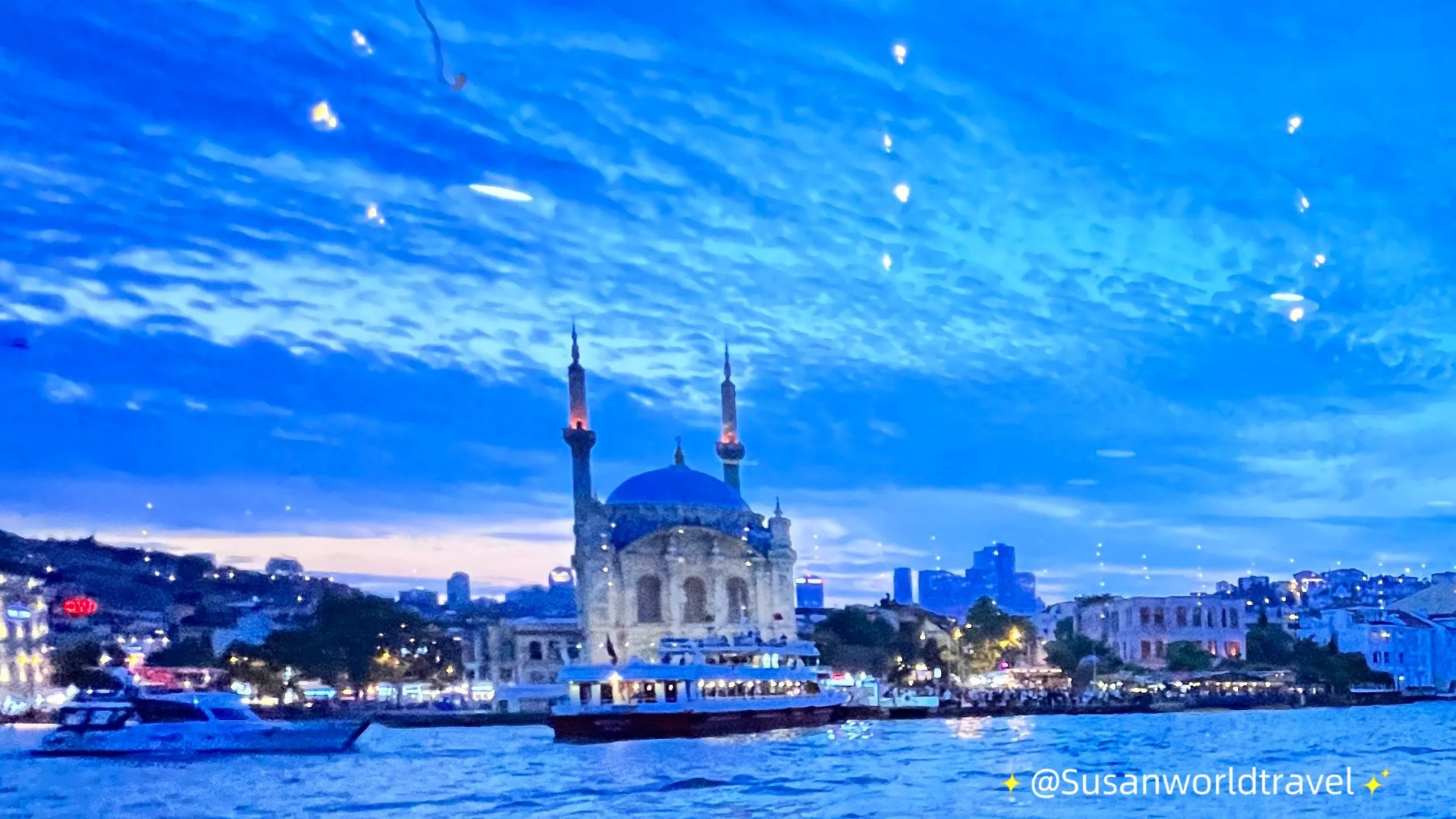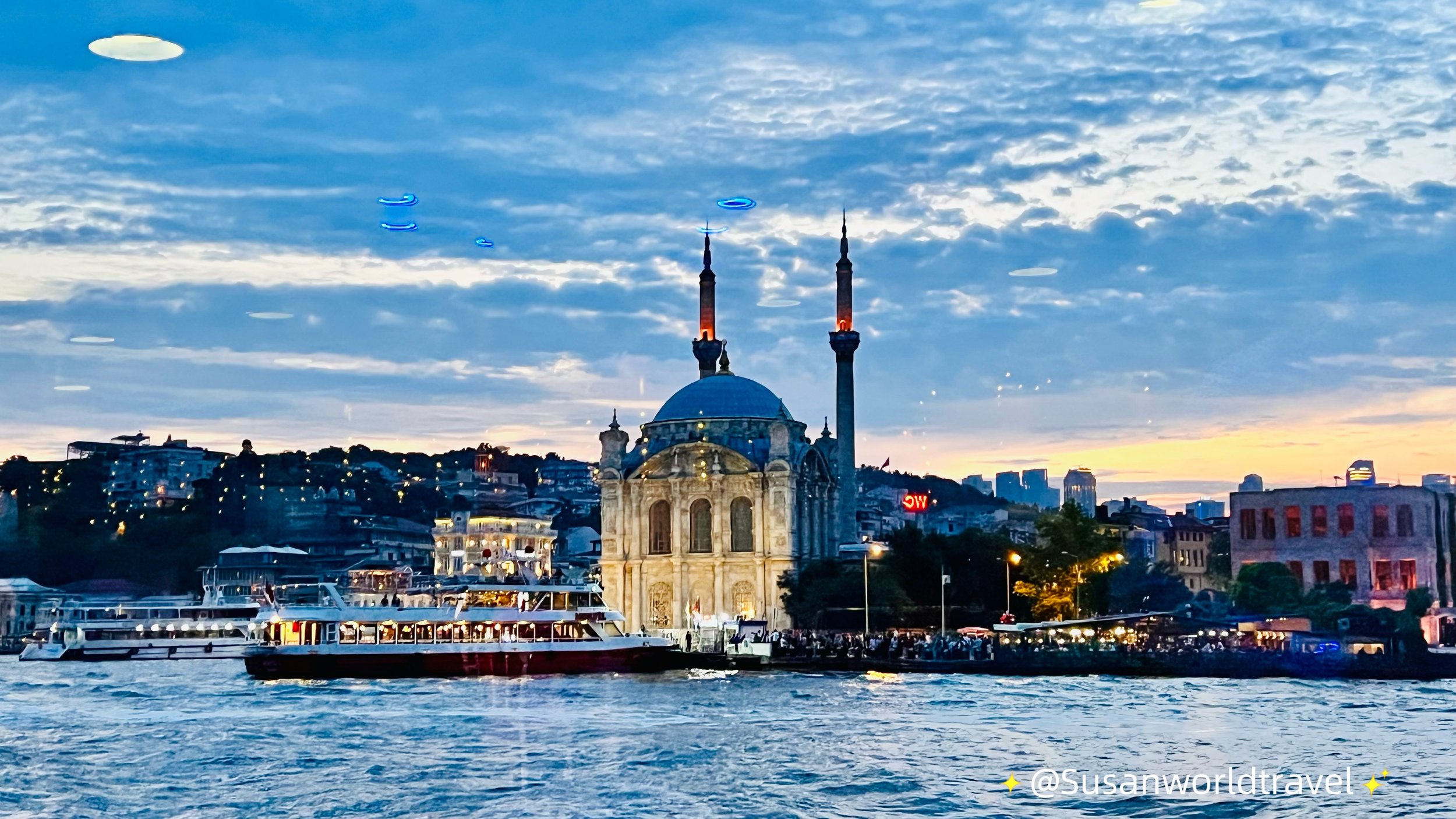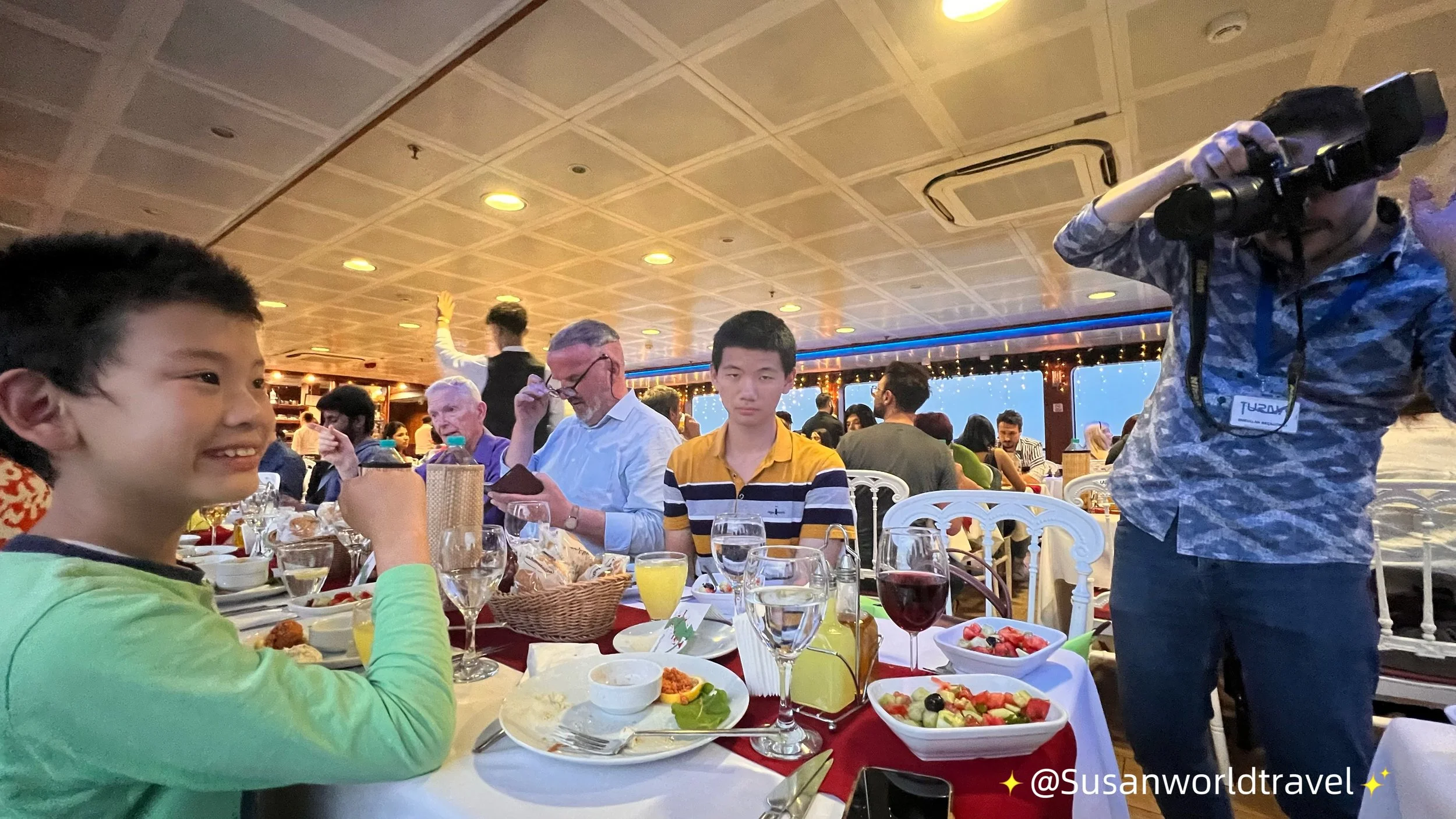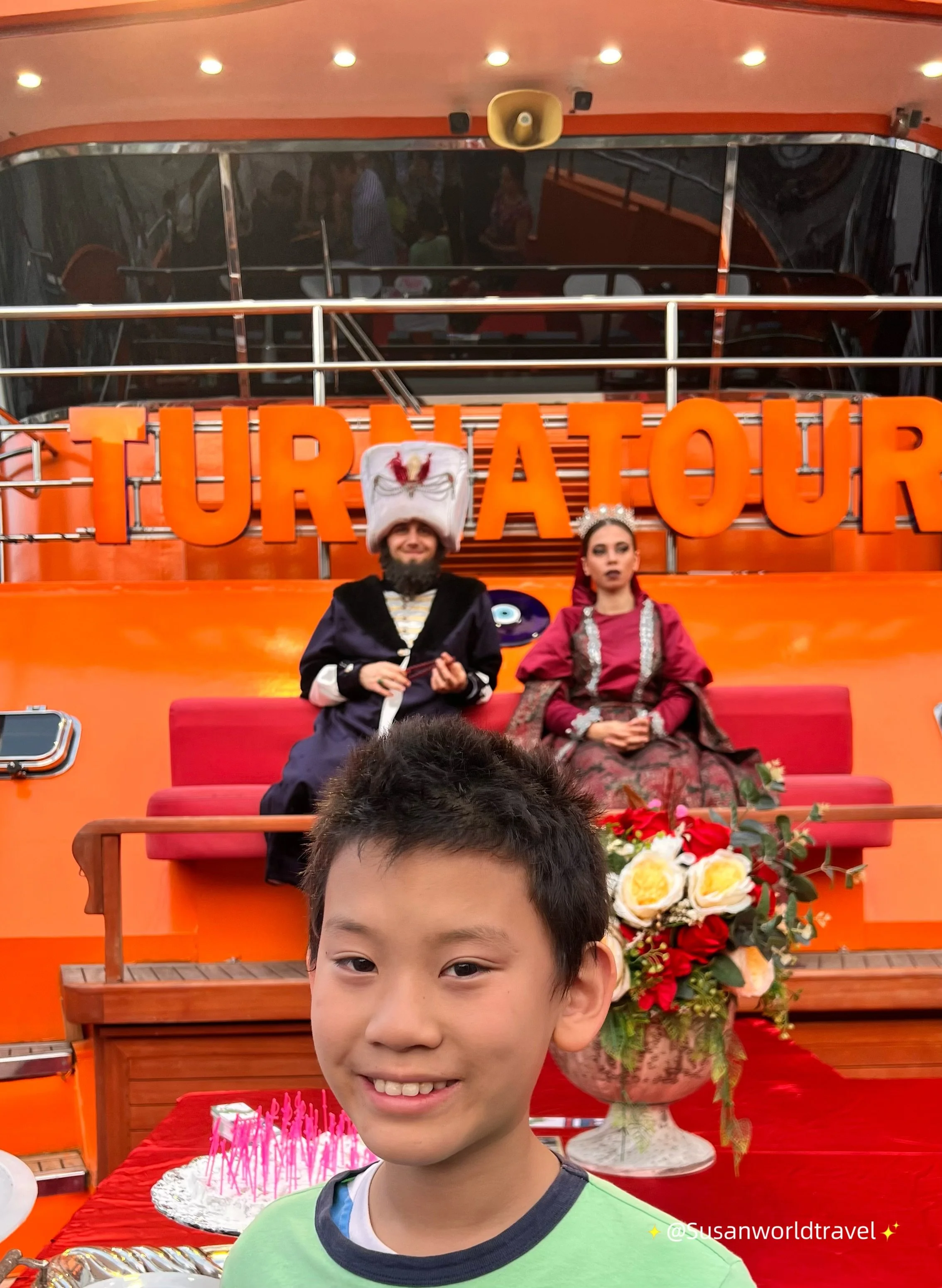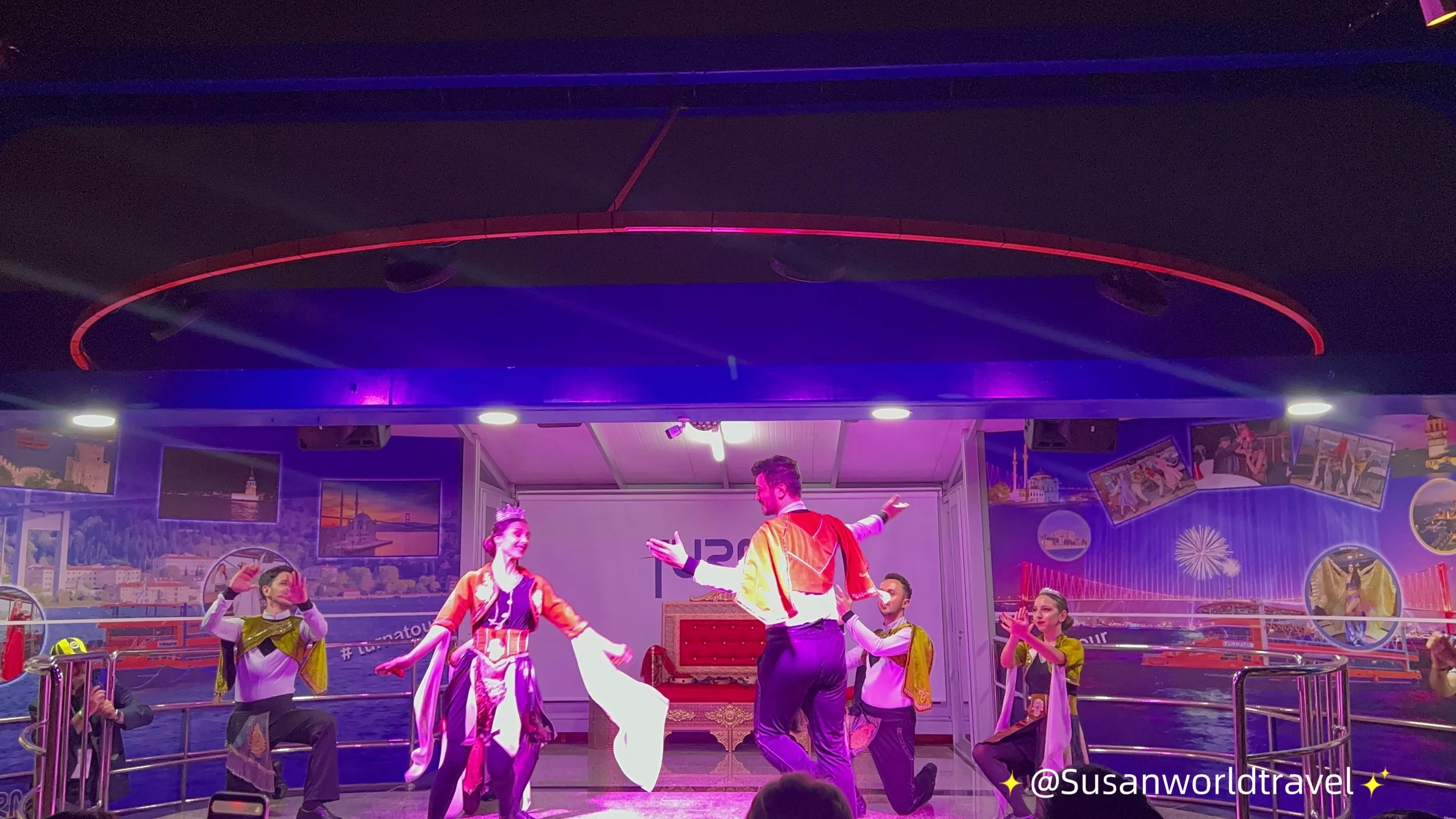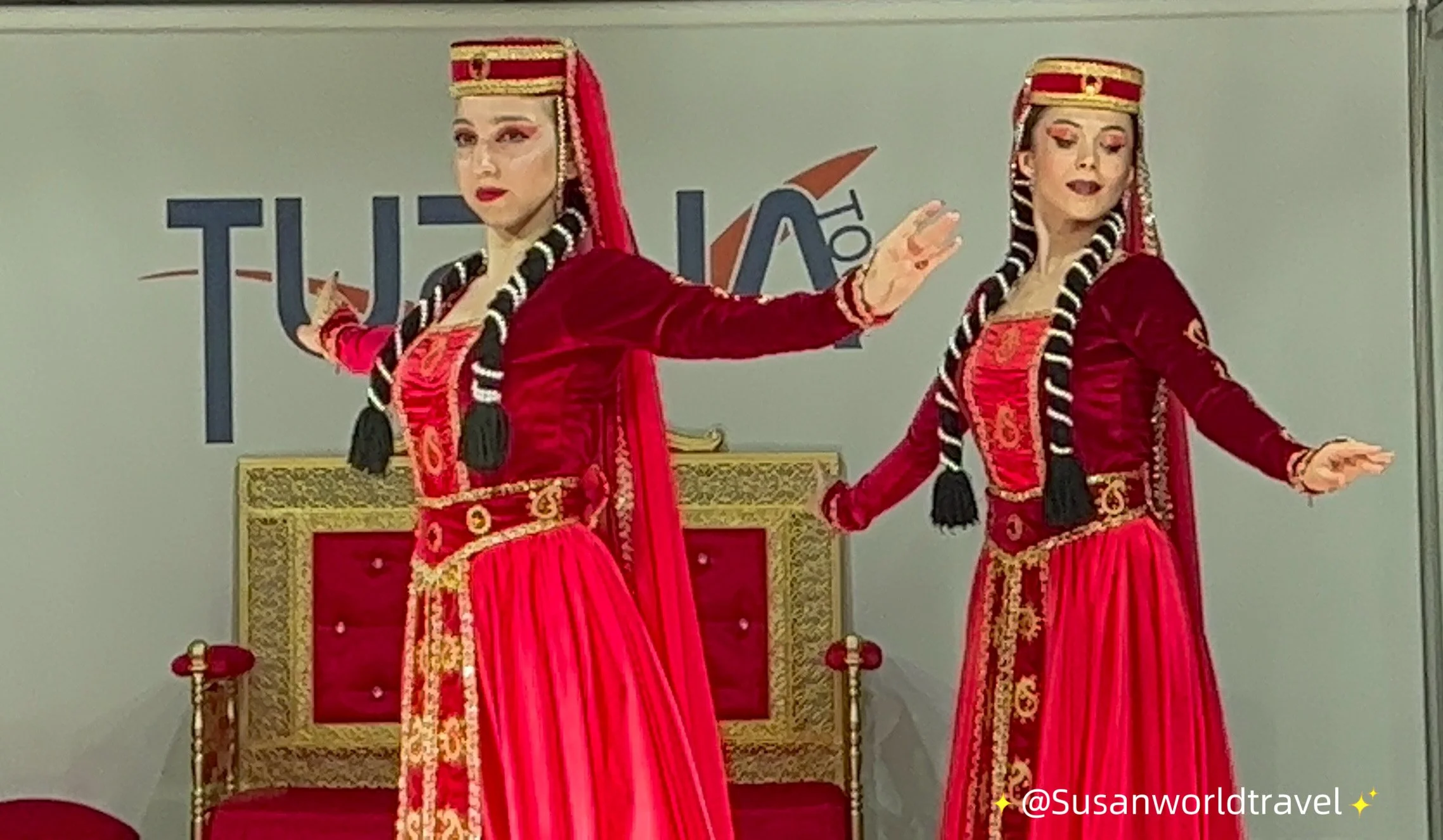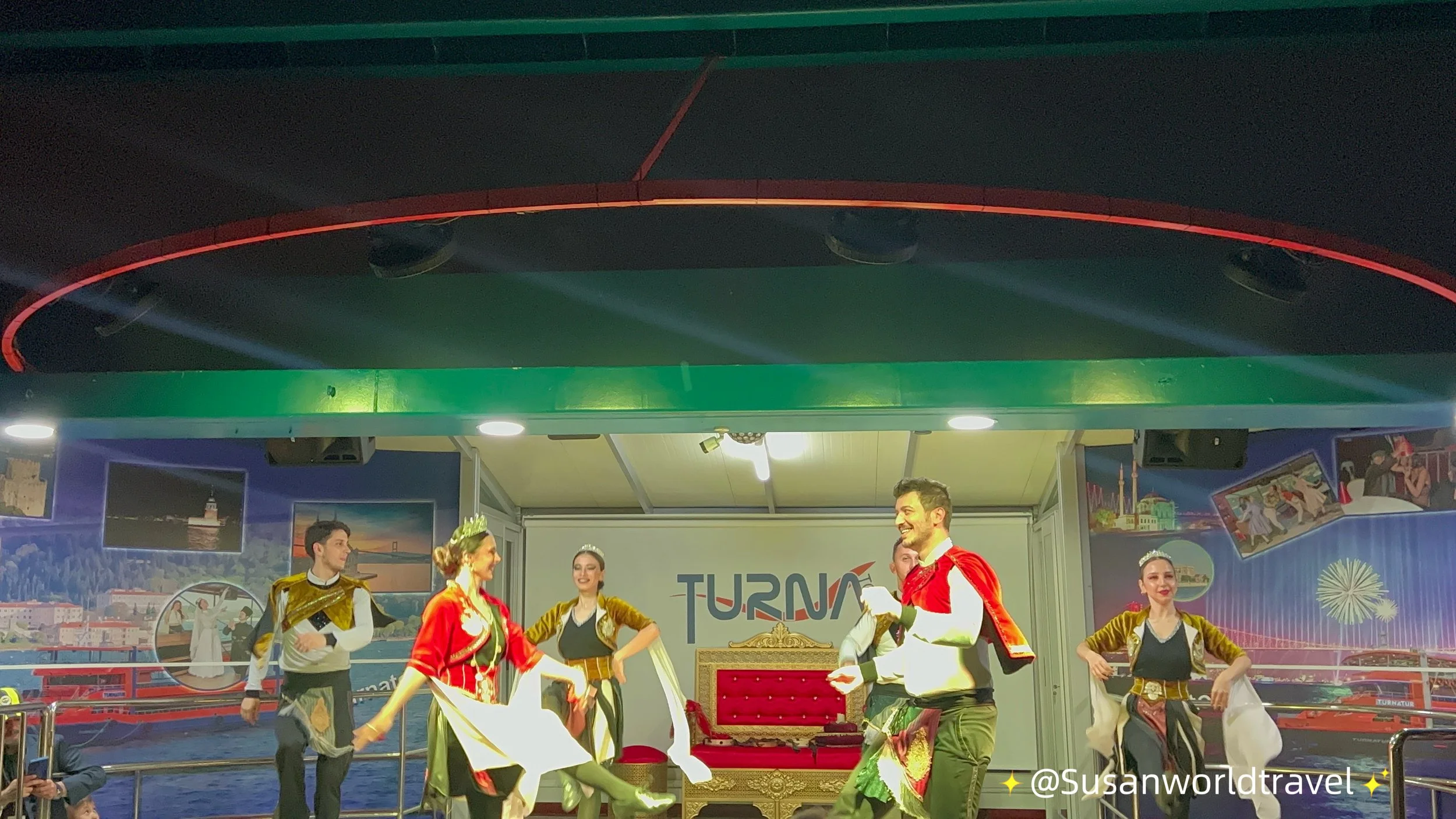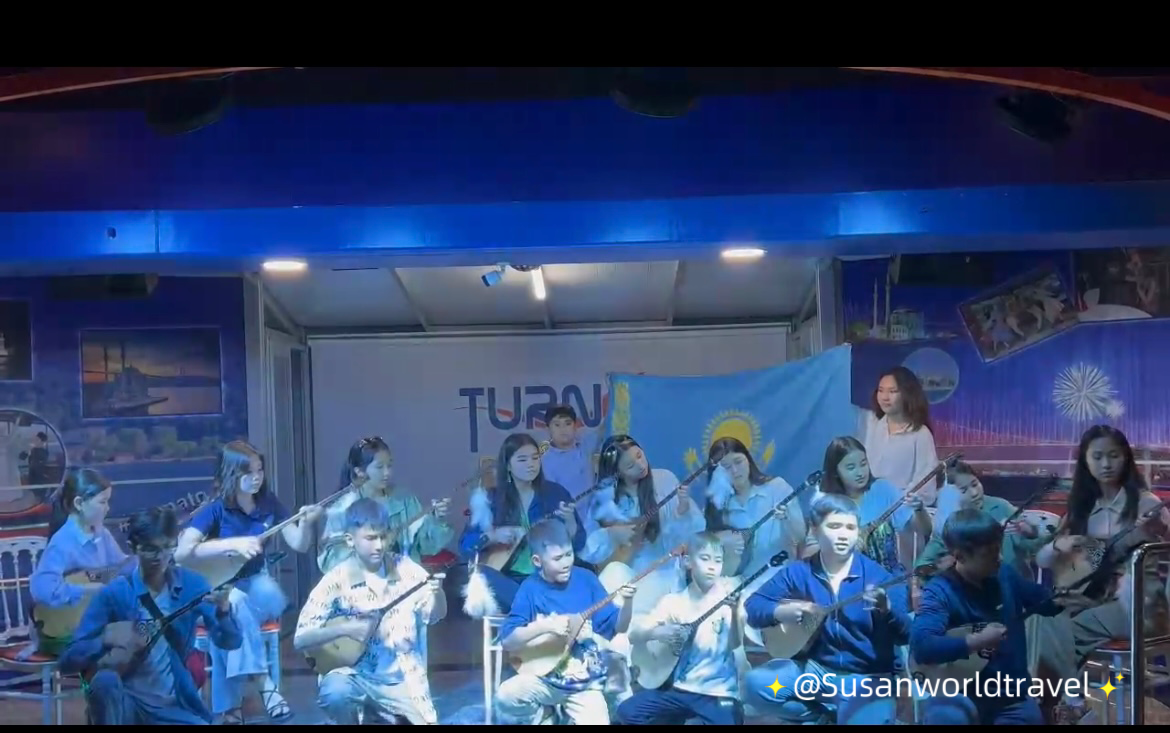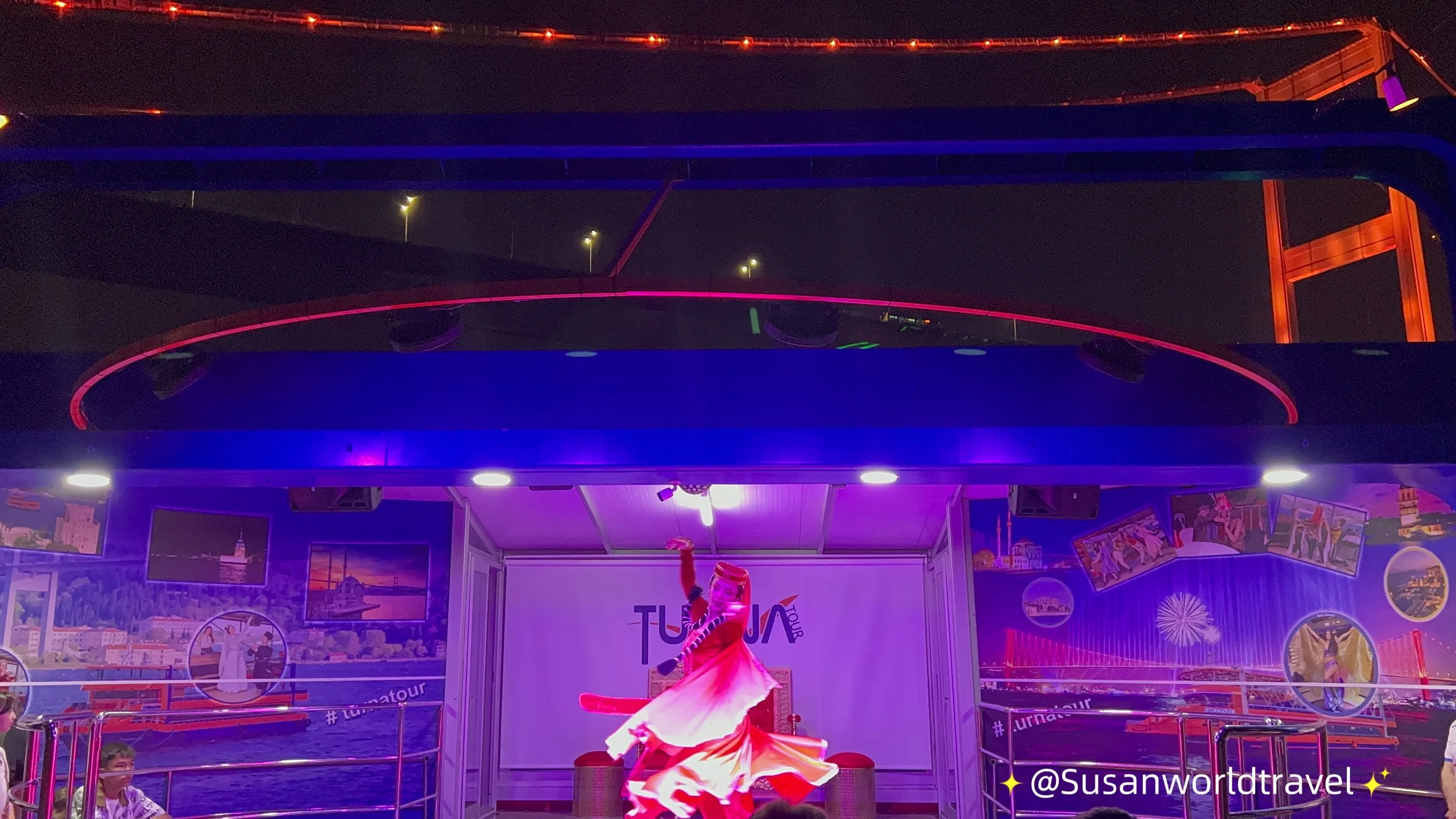Turkey Day 5
The Blue Mosque (Sultan Ahmed Mosque) in Istanbul is one of the most iconic landmarks in Turkey, known for its stunning architecture and rich history. Built between 1609 and 1616 during the reign of Sultan Ahmed I, the mosque is famous for its striking blue tiles that adorn the interior, giving it its name. Its grand design features a large central dome, surrounded by smaller domes and minarets, creating a majestic and symmetrical silhouette against the skyline. Inside, the mosque is decorated with over 20,000 handmade Iznik tiles in various shades of blue, along with intricate calligraphy and stained glass windows. It’s required for both men and women to dress modestly. Women are asked to cover their heads with a scarf, and both men and women should ensure their shoulders and knees are covered.
Hagia Sophia was originally built as a Christian cathedral by the Roman Emperor Justinian I in 537 AD. It remained the largest cathedral in the world for almost 1,000 years until the Ottoman conquest of Constantinople in 1453. After the conquest, it was converted into a mosque by Sultan Mehmed II and remained a mosque for almost 500 years. In 1935, it was secularized and turned into a museum by the Turkish Republic, before being re-designated as a mosque again in 2020. The same dress code applies here.
The Basilica Cistern is an ancient underground water reservoir in Istanbul, built in the 6th century during the reign of Emperor Justinian I. With 336 marble columns supporting its ceiling, it was designed to store water for the Great Palace of Constantinople. The cistern is known for its eerie atmosphere, with water still flowing beneath the columns. Two Medusa heads are among its most famous features. This fascinating site offers a glimpse into Byzantine engineering and remains a popular tourist attraction.
There are all kinds of shops along the road offering Turkish herbs, spices, and sweets, allowing you to experience the rich flavors of the local culture. Turkish spices are famous for their vibrant flavors, aromatic scents, and rich history. The Spice Bazaar in Istanbul, for example, is a renowned market where a wide variety of spices, herbs, and blends are sold, showcasing Turkey's long tradition of using spices in its cuisine. Spices like sumac, cumin, paprika, saffron, and dried mint are essential in Turkish cooking, adding depth and complexity to dishes like kebabs, mezes, and pilafs.
Turkish spices are also historically significant due to the country's position as a crossroads between Europe, Asia, and the Middle East, making it a key player in the ancient spice trade. These spices are not just for flavor but also have cultural and medicinal importance, often used in traditional remedies.
Additionally, Turkish sweets like baklava and Turkish delight are often flavored with spices like rosewater, cardamom, and cinnamon, making them even more distinctive and popular worldwide.
The Istanbul ice cream trick is a fun street performance where a vendor playfully teases customers while serving Turkish dondurma—a chewy, stretchy ice cream. Using a long metal stick, he flips, spins, and snatches the cone away just as you try to grab it. It’s all part of the show, thanks to the ice cream’s elastic texture made with salep and mastic.
On our Bosphorus night cruise in Istanbul, we enjoyed breathtaking views of the city’s illuminated landmarks, including the Bosphorus Bridge, Dolmabahçe Palace, and the Maiden's Tower. As we sailed along the strait, we were treated to lively performances like Sema dance, Turkish belly dance, and a vibrant show by the Kazakhstan Youth after dinner and drinks. The Sema dance is a spiritual practice performed by Sufi dervishes as part of their whirling ceremony. This dance, central to Sufism, symbolizes the soul’s journey toward the divine. Dancers, dressed in white robes and tall hats, spin in circles to the music of a reed flute (ney) and drums, representing spiritual unity and devotion.
